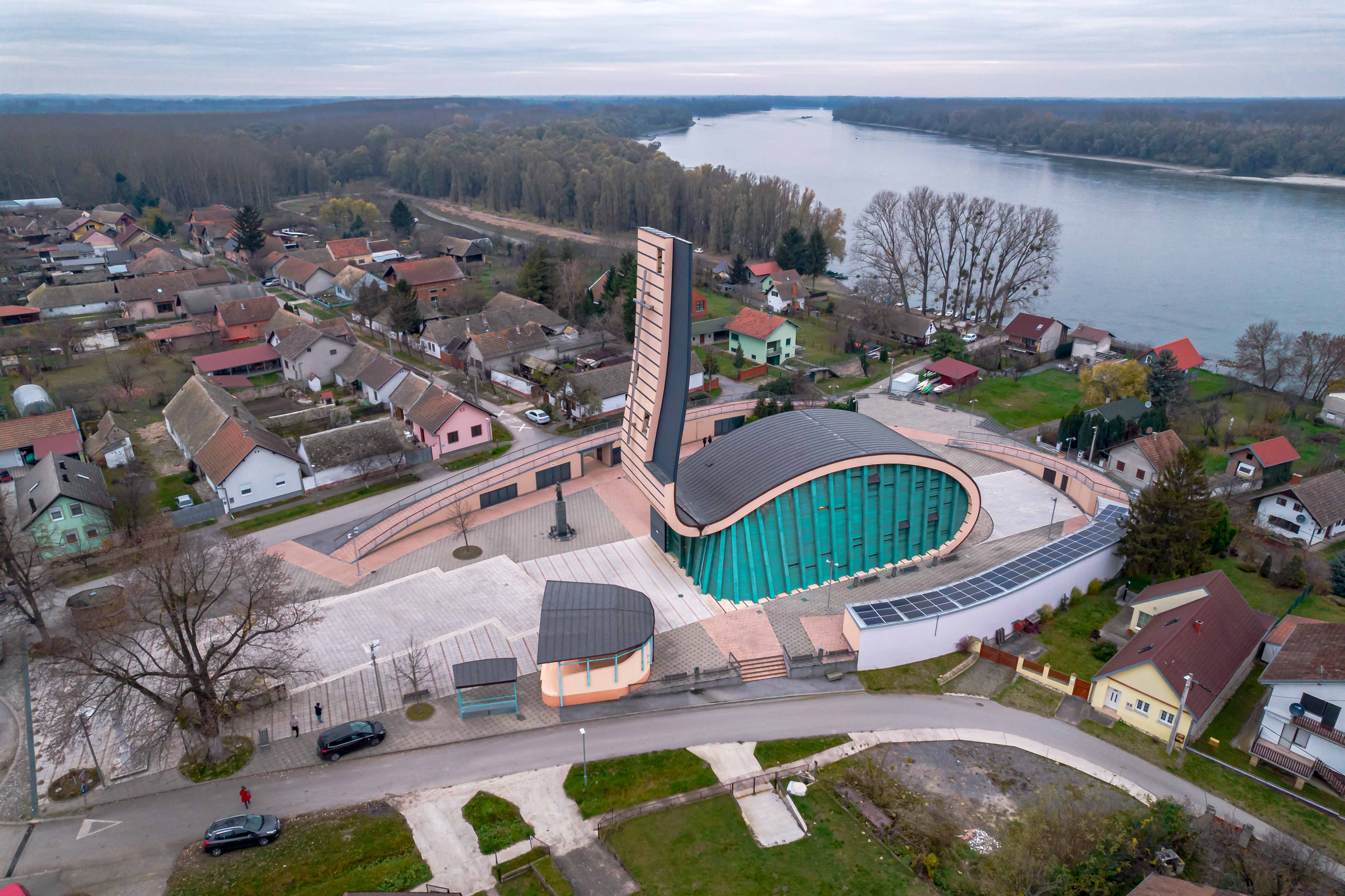Discover the Croatian Danube: Fishing Village of Aljmaš (Part 1)
August 15, 2022 – The blue, the mighty, the grand, the Danube. One of the most important rivers in the world that was the lifeline of an entire civilisation in Vučedol remains an aspect of life without which life would be unimaginable everywhere along its course. The German, the Austrian, and the Hungarian Danube are well known. It is time to discover the Croatian Danube. From Osijek to Ilok, its course is adorned with picturesque little villages. In part one of the series, welcome to Aljmaš.
Located some twenty-six kilometres east of Osijek and the same distance north of Vukovar, between the slopes of Alma Mons, or Fruška Gora, and the bank of the Danube, this small fishing village patiently awaits the arrival of all who seek peace and quiet. Four streets, a thousand or so houses, one big church, some 350 people. Is that all there is? Of course not. Hundreds of years of history, legends, traditions, and the best fish stew you would ever hope to try. An easy, quiet lifestyle with all that you might need. Even business opportunities.
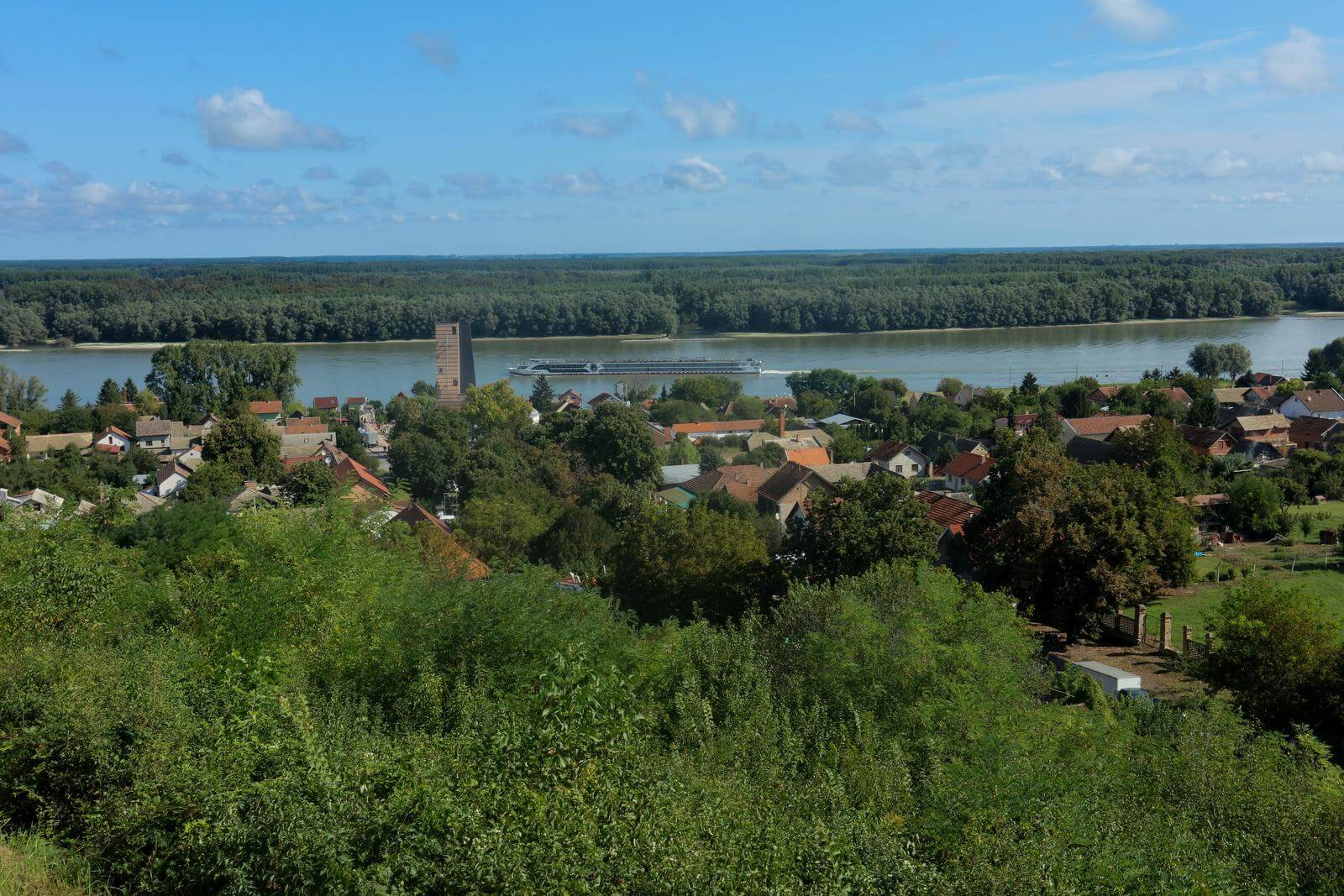
Photo: Dubravka Petric (PIXSELL)
It has been 785 years since the first mention of the name Aljmaš. The area itself, though, has hosted life since long before, and the locals keep finding remains of Roman architecture to this day. With its geographical position in proximity to the river, the settlement surely played an important role in the Roman empire. A theory excitedly discussed among the locals is that a yet-to-be-located battle between the Romans and the Illyrians might have happened in the valley of Aljmaš itself.
The historical importance of the village also lies in the fact that the well-known Hungarian humanist and poet Janus Panonnius was born in none other than Aljmaš. Though Čazma was previously believed to be his birthplace, his verses confirm that it was indeed “Where the Drava surrounds its name and water to the Danube”. And during the Austro-Hungarian rule, it was the beloved summer garden of Maria Theresa.
As for other popular sources of debate, there is an interesting theory that explores the possibility that Novi Sad in Serbia was built by settlers from Aljmaš, somewhat resembling the New Amsterdam story. In the early 18th century, when the plague was the main threat in Europe, a group of people from Aljmaš apparently sailed out on a raft down the Danube to escape the disease. They might have settled some 130 km east, around the area of today’s Novi Sad. To confirm this theory, the locals point out that the streets of Aljmaš were called sadovi, which is an old Slavic word for garden, and the name Novi Sad, you guessed it, means a new garden. Secondly, Novi Sad, the city is only about three hundred years old, which would correspond to the time of movement.
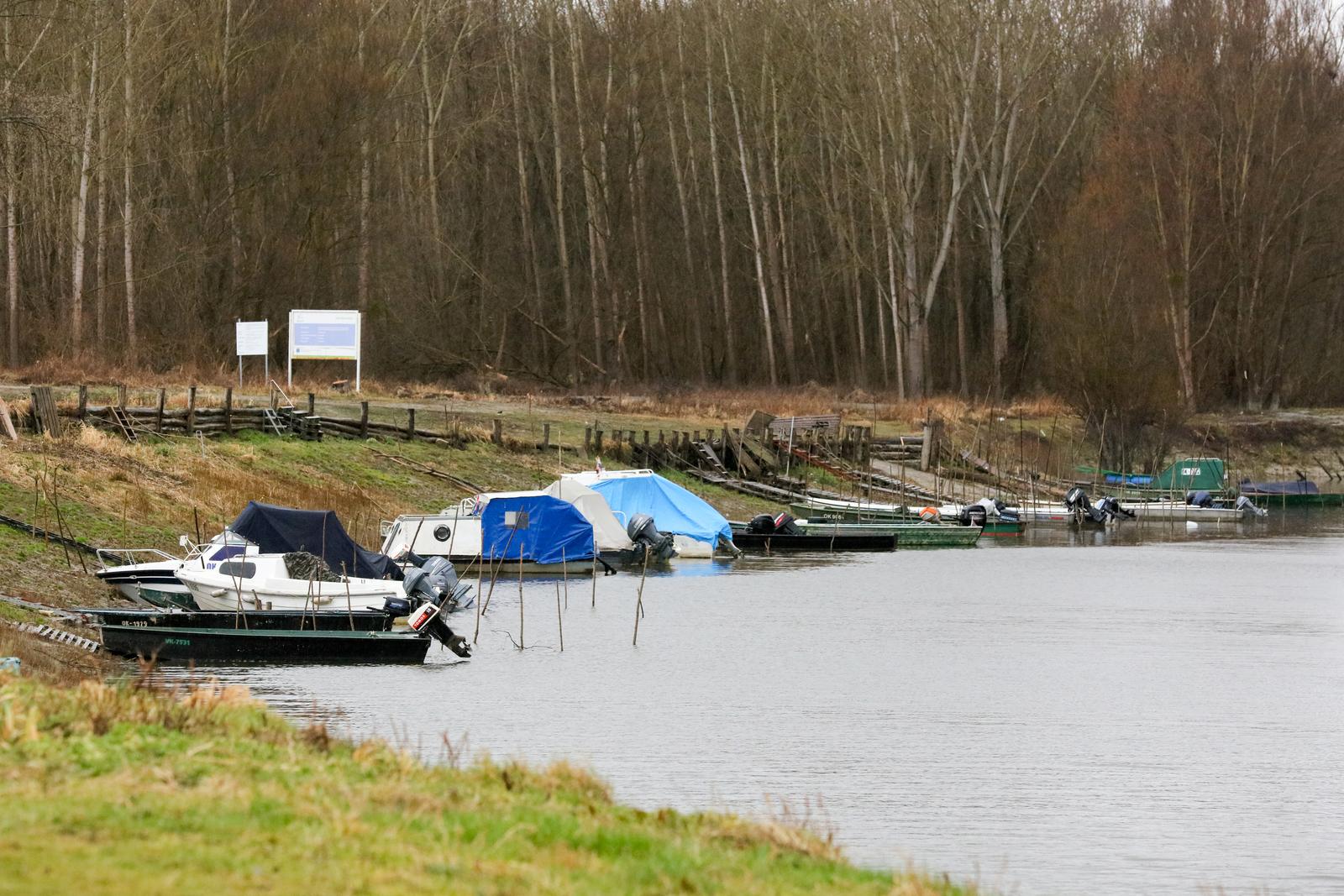
Photo: Dubravka Petric (PIXSELL)
Modern Aljmaš lived its golden age between the two world wars, when 1446 people lived there, who owned 46 businesses, and the village had 2 butchers and 3 bakeries. It was an important port on the way from the Black Sea to Budapest, which, as you can imagine, ensured that the birth rate would steadily grow. It was also an important weekend and summer home for the nobles of Osijek and Vukovar who needed a quiet place in nature, especially those who liked fishing. After the second world war, as well as the Homeland war, the population of Aljmaš unfortunately significantly declined, leaving it at approximately a quarter of what it used to be.
It is, however, slowly being rediscovered. Trying to escape a busy hectic lifestyle, many will naturally gravitate towards picturesque little places like this to spend their holidays, weekends, or retirement, but people have also started permanently moving there to live a relaxed life and raise their children in a safe environment where nature still dictates the way of life.
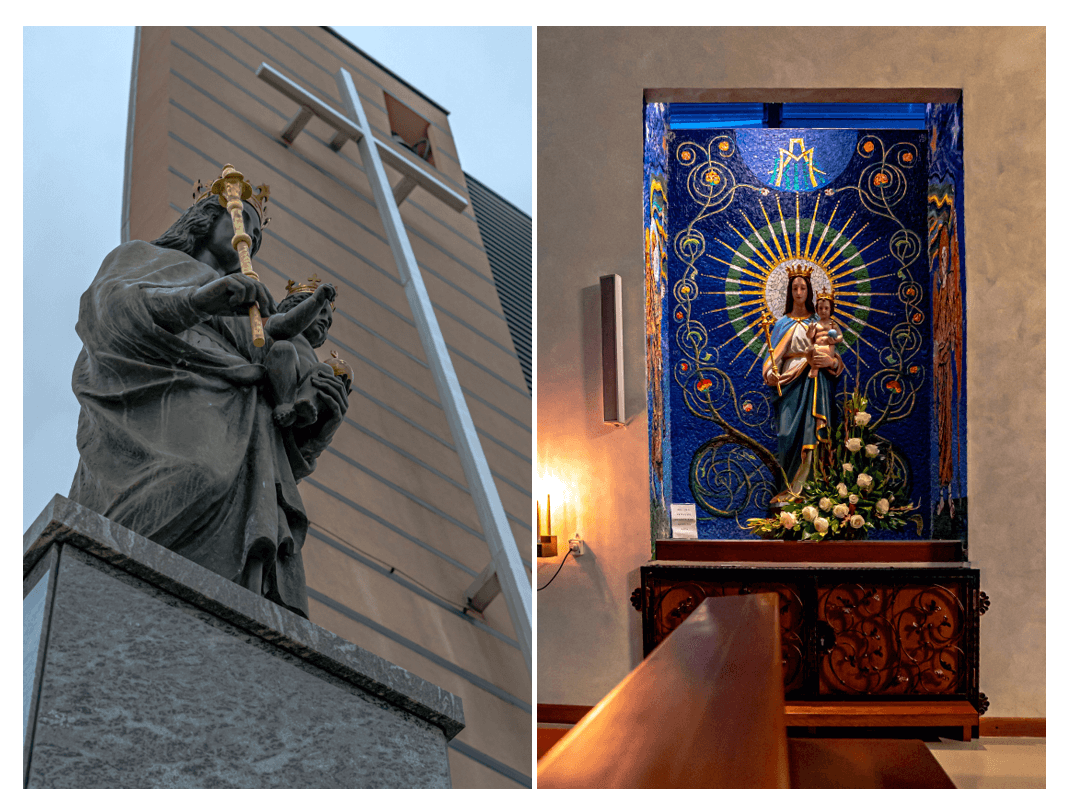
Photos: Steve Tsentserensky
Catholicism has always played a very important role here, so much so that even during the Ottoman rule when many were forced to convert to Islam, Aljmaš remained a Catholic settlement. Nowadays, it is one of the famous places of worship and pilgrimage in the name of Mary. Even though a legend does exist of a sighting of the Virgin Mary, the reason why Aljmaš became her home is different. In 1704, a statue of Mary was brought from the village of Lug in Baranja to save it from the rebellion that was brewing there against the Habsburg monarchy. A humble little church made of branches and mud stood in Aljmaš to provide shelter. Mary has been the symbol of Aljmaš ever since. In 1846 the village church burnt down, along with the statue, only leaving a painting of the former statue. A new baroque church was built, and the bishop Josip Juraj Strossmayer financed a new statue to be made in Vienna. During the Homeland war in 1991, the said church was heavily bombarded and taken down, and the statue was believed to be destroyed. In 1992, however, a Russian UN soldier found the statue with only the crown and a part of one arm missing, dressed it in his vest, and put a helmet on it to conceal it and safely transport it to Osijek. Just like the people of Aljmaš, it spent years in exile. It remained in Osijek until 1998 when it was taken back to Aljmaš. The road, of course, was the Danube. It was taken on a boat, with hundreds of fishing boats following.
Photo: Steve Tsentserensky
With the old church destroyed and the statue of Mary having been returned to Aljmaš, the local government decided to invest in a new place for worship and built the new, monumental church in 2003. It is famous for its architecture, but this does spark debate among the locals. While some think that its modern design draws people in, others disagree since its architectural integrity might not be the best, and it is questionable how long the church will withstand the humidity and the winds from the Danube.
One thing is for sure, though. The church is still an important place not only for the residents of Aljmaš but for many who visit to pray and contemplate. Without a doubt, the most important date remains today, August 15, marking the Assumption of Mary. Year after year, the holy mass in the open gathers thousands of pilgrims. Though it is a quiet celebration, the village comes alive in its former glory with people walking, talking, praying, and the children all gathering around the little stalls for ice cream, cotton candy, or plastic toys.
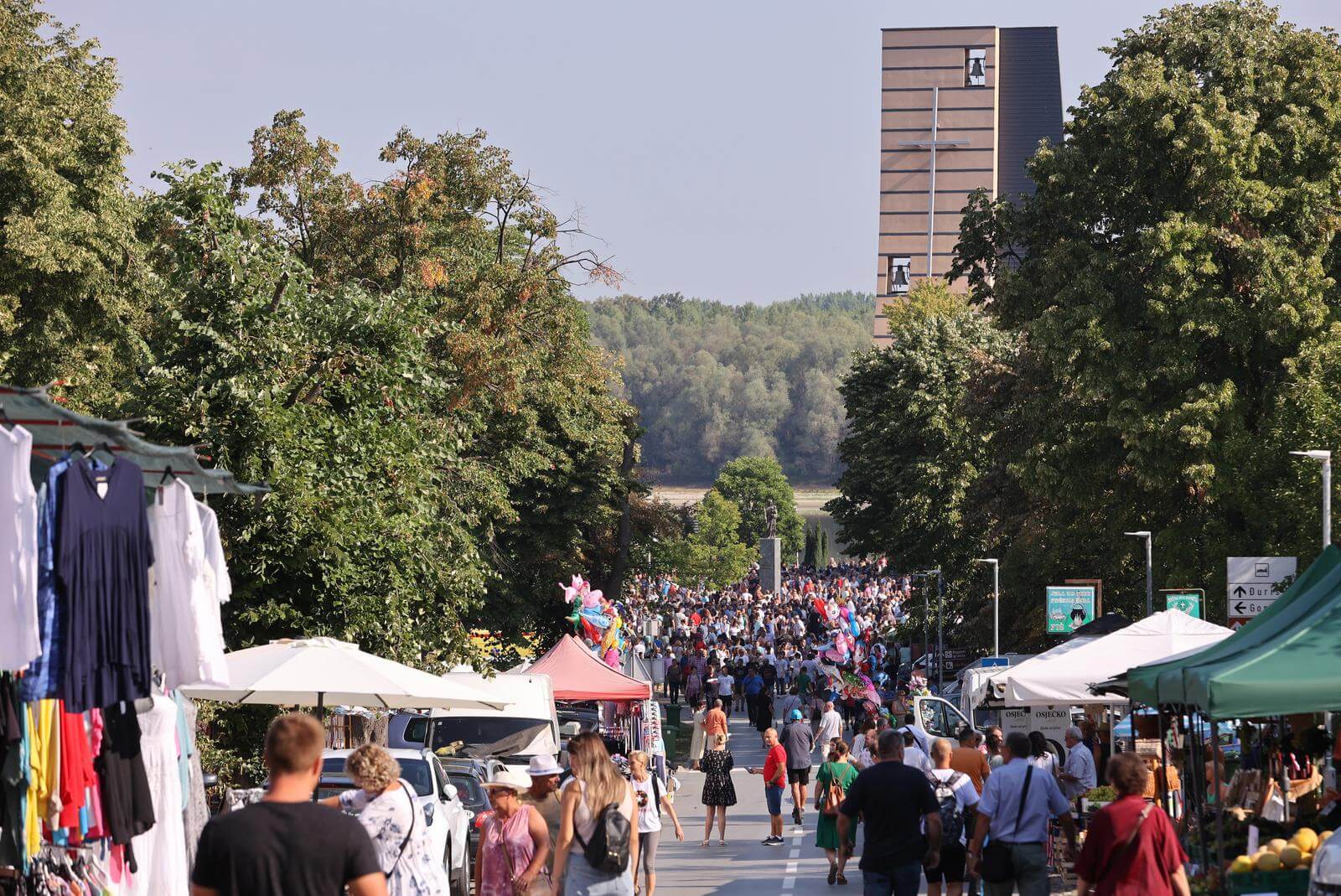
Photo: Davor Javorovic (PIXSELL)
Even though August 15 remains the most important day for Aljmaš, it is not the only day when something happens. The locals gathered in cultural societies make sure that the traditions keep on living, and that daily life is still eventful. To find out more about the local customs and traditions which live on, how the village Google makes sure they know it all, why foreigners keep buying houses there, and when you should make sure you visit, stay tuned for part 2 next week on TCN.
Special thanks to Marina, a tourist guide from Aljmaš, who works hard to keep tradition alive and who happily shared her stories with TCN.
How good is your knowledge of eastern Croatia? Take the CROMADS test above - how many places do you recognise?
For more, make sure to check out our dedicated Lifestyle section.
Discovering Authentic Croatia's Secrets With Seoski Tourism
November 4, 2021 – Village tourism or countryside tourism - Seoski tourism in Croatia - offers authentic, traditional experiences. Aleksandra Kuratko, secretary of Udruga ruralnog turizma Hrvatske (Croatian Rural Tourism Association) tells us more about it, and their work to help facilitate it
Croatia's visitor offer is evolving and expanding. There are exciting aspects of authentic Croatia to be discovered. Away from the beach, villages inland often look remarkably similar to how they did one hundred years ago. There, crops are grown and produce made in ways passed down through generations of families. And, in some lucky instances, these family farmers are willing to open their doors, invite you inside and show you how they live.
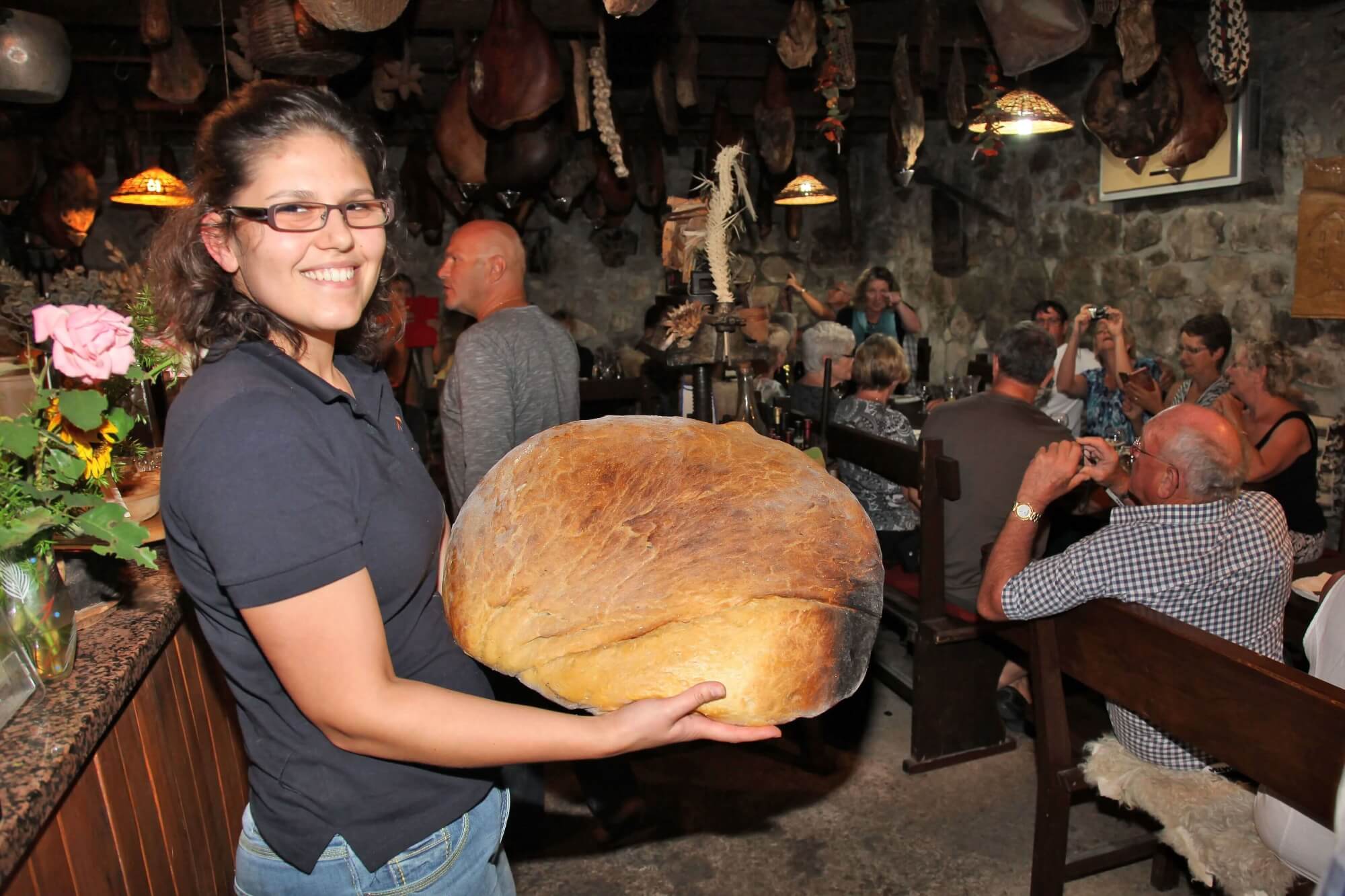 Bread from the peka at Agroturizam Antunović on Pelješac
Bread from the peka at Agroturizam Antunović on Pelješac
Seoski Tourism – translated as either village tourism or countryside tourism – is just that. Family farms that offer hospitality. These are some of the most homely and most welcoming accommodation experiences you can have in Croatia. Offering sights and sounds, tastes and flavours that you can't find anywhere else, visits or stays in Seoski Tourism places have long been loved by locals for weekend breaks or holidays outside peak summer. But, increasingly, these authentic Croatia experiences are being discovered by international visitors.
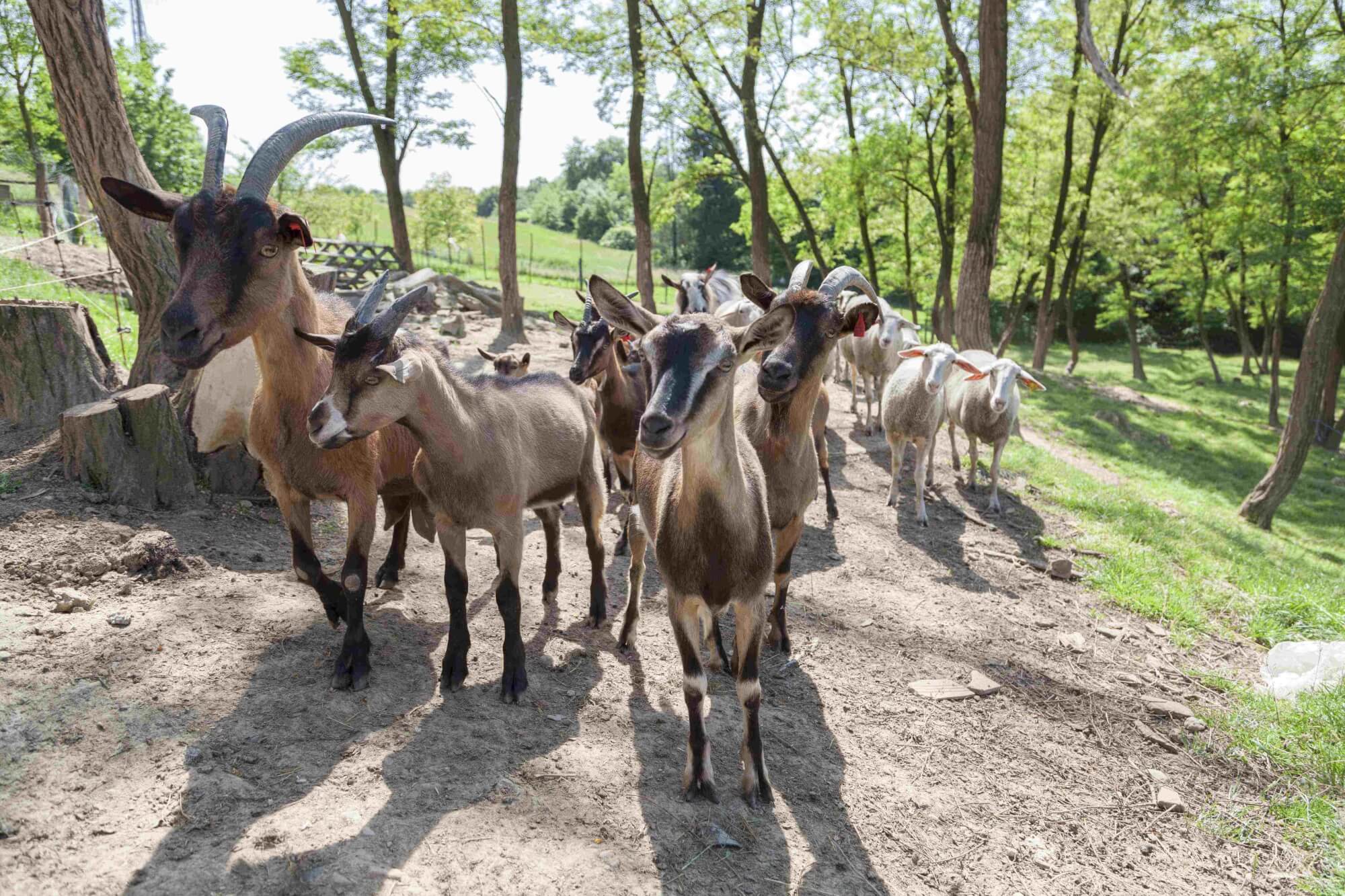 Moslavina goats at Kezele family farm © Davor Konjikušić
Moslavina goats at Kezele family farm © Davor Konjikušić
One institution trying to facilitate the growth in interest is Udruga ruralnog turizma Hrvatske - Croatian Rural Tourism Association. Since it was formed in 2016, they have tried to bring together Croatia's family farm hosts, to promote them and educate them, and to build bridges between these independents and tourist boards, tourist agencies, educators and even the wider world outside Croatia.
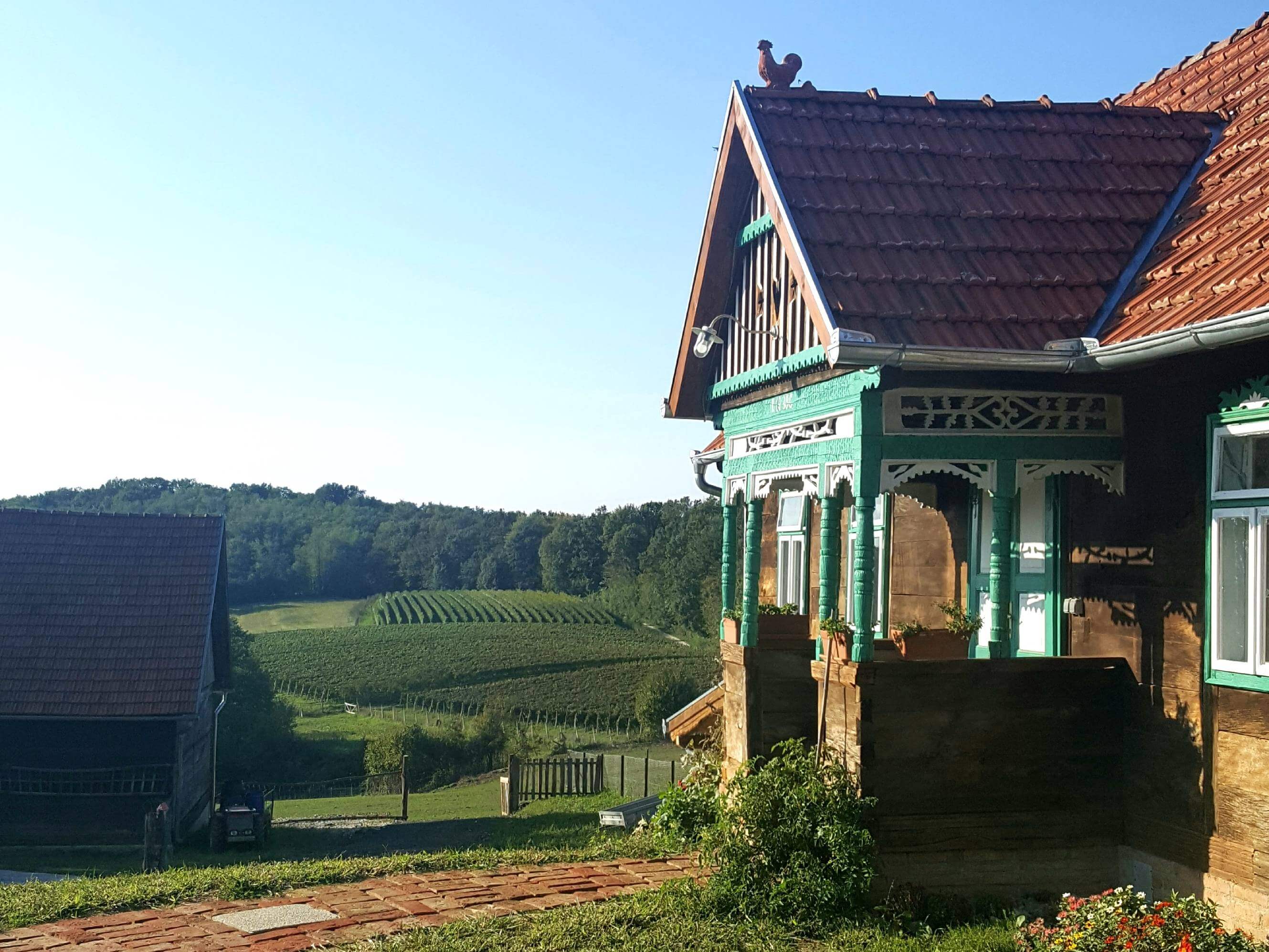 Seoski turizam Kezele in Šumećani, on the border of Zagreb County and Bjelovar Bilogora County © Davor Konjikušić
Seoski turizam Kezele in Šumećani, on the border of Zagreb County and Bjelovar Bilogora County © Davor Konjikušić
Based in Ivanić-Grad, Zagreb County, the Croatian Rural Tourism Association is currently touring the length and breadth of the country, holding workshops with as many Seoski Tourism family farms that will come. And if the farmwork doesn't allow them free time, then they can attend Croatian Rural Tourism Association workshops online.
On the eve of the association's online Seoski Tourism workshops for Central Croatia and Slavonia, TCN interviewed Aleksandra Kuratko, secretary of Udruga ruralnog turizma Hrvatske, to find out more about Seoski Tourism in Croatia.
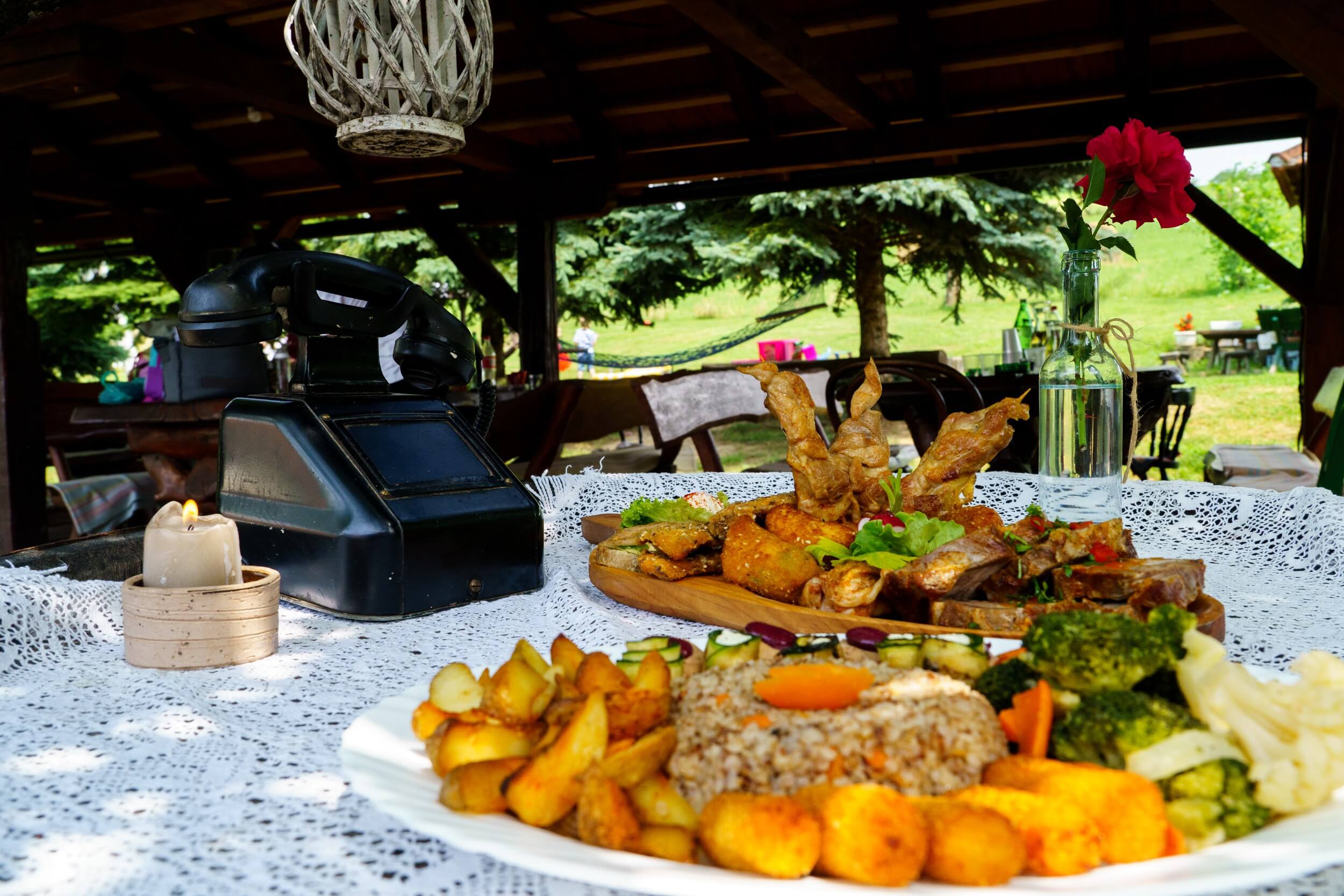 Prigorje specialties at Rakić family farm
Prigorje specialties at Rakić family farm
My name is Aleksandra Kuratko and I am secretary of Udruga ruralnog turizma Hrvatske. As an association, we are 5 years old.
We have 35 members, most of whom are service providers in what we call Seoski Tourism. We also have several tourist boards and two educational institutions as members.
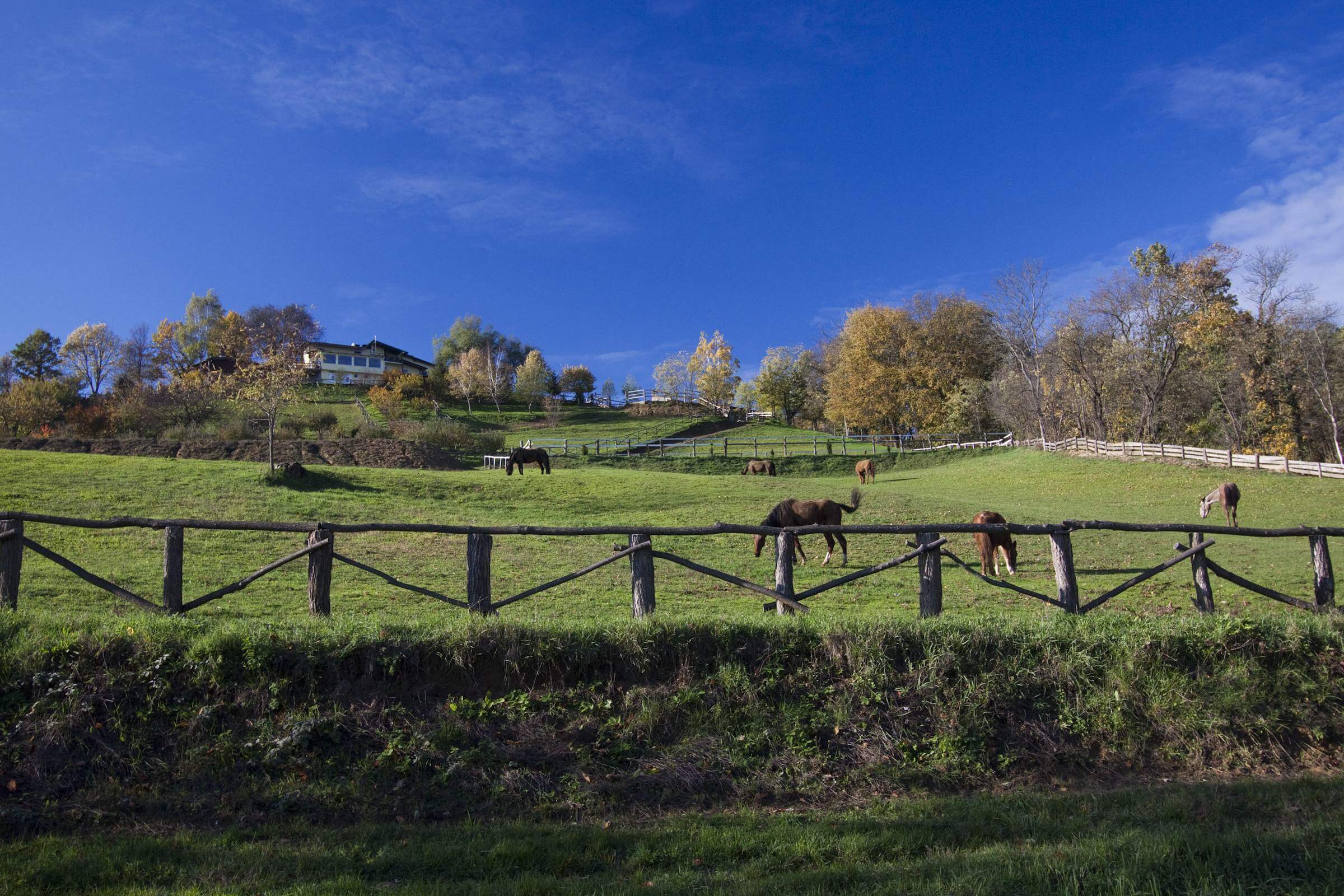 Bilogora horses in autumn at Agroturizam Na malenom brijegu © Vladimir Vlajinić
Bilogora horses in autumn at Agroturizam Na malenom brijegu © Vladimir Vlajinić
Seoski tourism is not quite the same as rural tourism, because rural tourism is many different types of tourism that happen in rural areas. Seoski tourism - which you might translate as village tourism - is quite specific. We assemble people who work in agriculture and who, at the same time, are also offering hospitality. In English, you might call them Farm Stays. Or Agro-tourism – a merging of agriculture and tourism.
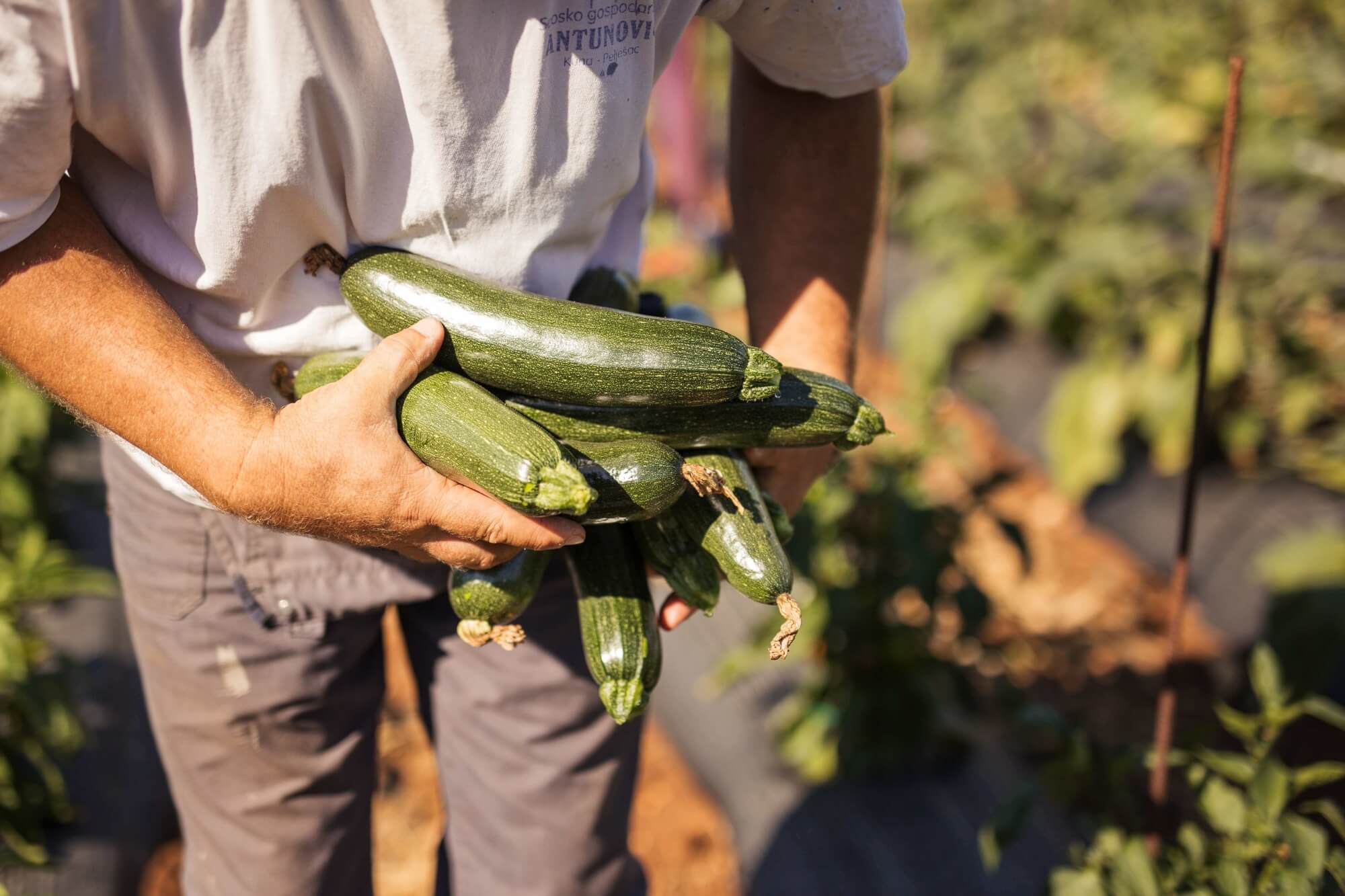 Fresh vegetables at Agroturizam Antunović on Pelješac
Fresh vegetables at Agroturizam Antunović on Pelješac
People who work on agricultural estates often take care of local cultural heritage. For example, they might maintain and renew traditional wooden or stone houses. Many also have etno collections, in which they preserve different objects from their region. Some of these objects might have been used in agriculture and households hundreds of years ago. So, they are preserving the cultural heritage of Croatian villages. This is what we call material cultural heritage. But, there's another kind.
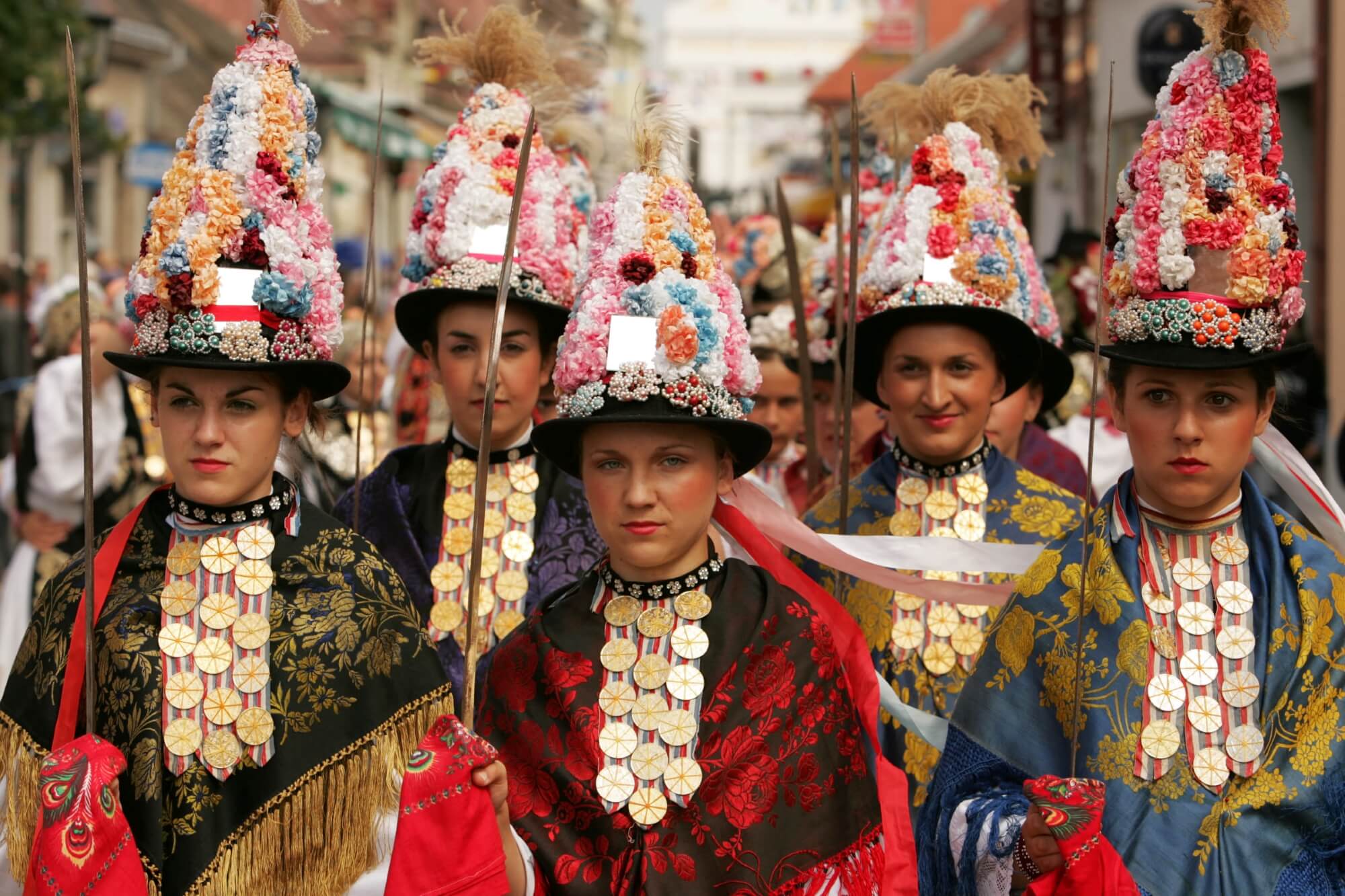 Cultural heritage preserved in one Slavonian village © Mario Romulić
Cultural heritage preserved in one Slavonian village © Mario Romulić
Non-material cultural heritage is also a part. That might be preserving old recipes of traditional, regionally-specific dishes. Or, it might be showcasing the songs and dance of local music.
We are currently running a project which is supported by the Croatian Ministry of Tourism and Sports in which we hold 37 Seoski Tourism workshops in the field all over Croatia. There will also be around 15 online workshops. The workshops are aimed at colleagues who currently operate in Seoski Tourism – they work in agriculture and offer hospitality. Also invited are local tourist boards and local action groups.
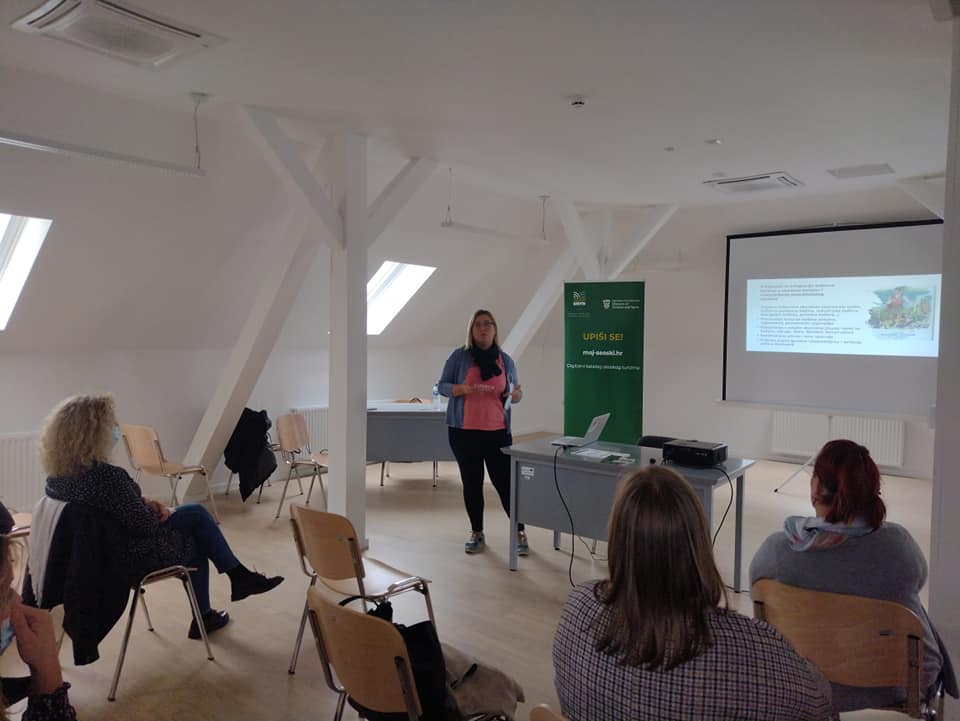 Photo from URTH workshop in Slatina
Photo from URTH workshop in Slatina
So far, we conducted 20 workshops in the regions of Central Croatia, Slavonia and Baranja, and Podunavlje. From next week until the end of the year, we will conduct the workshops in Istria, Kvarner, Lika and Dalmatia. Some service providers were not able to attend earlier workshops, because of work commitments of Covid. So, we decided to also offer access to the workshops online. Tomorrow is our first online workshop for Central Croatia and on Friday it's the online workshop for Slavonia.
These workshops are interactive discussions between our association, service providers and all other stakeholders. We discuss the legislative framework, which can be extremely complex. We talk about new trends in tourism for the post-pandemic era. We also discuss the importance of integrating cultural heritage in digital promotion.
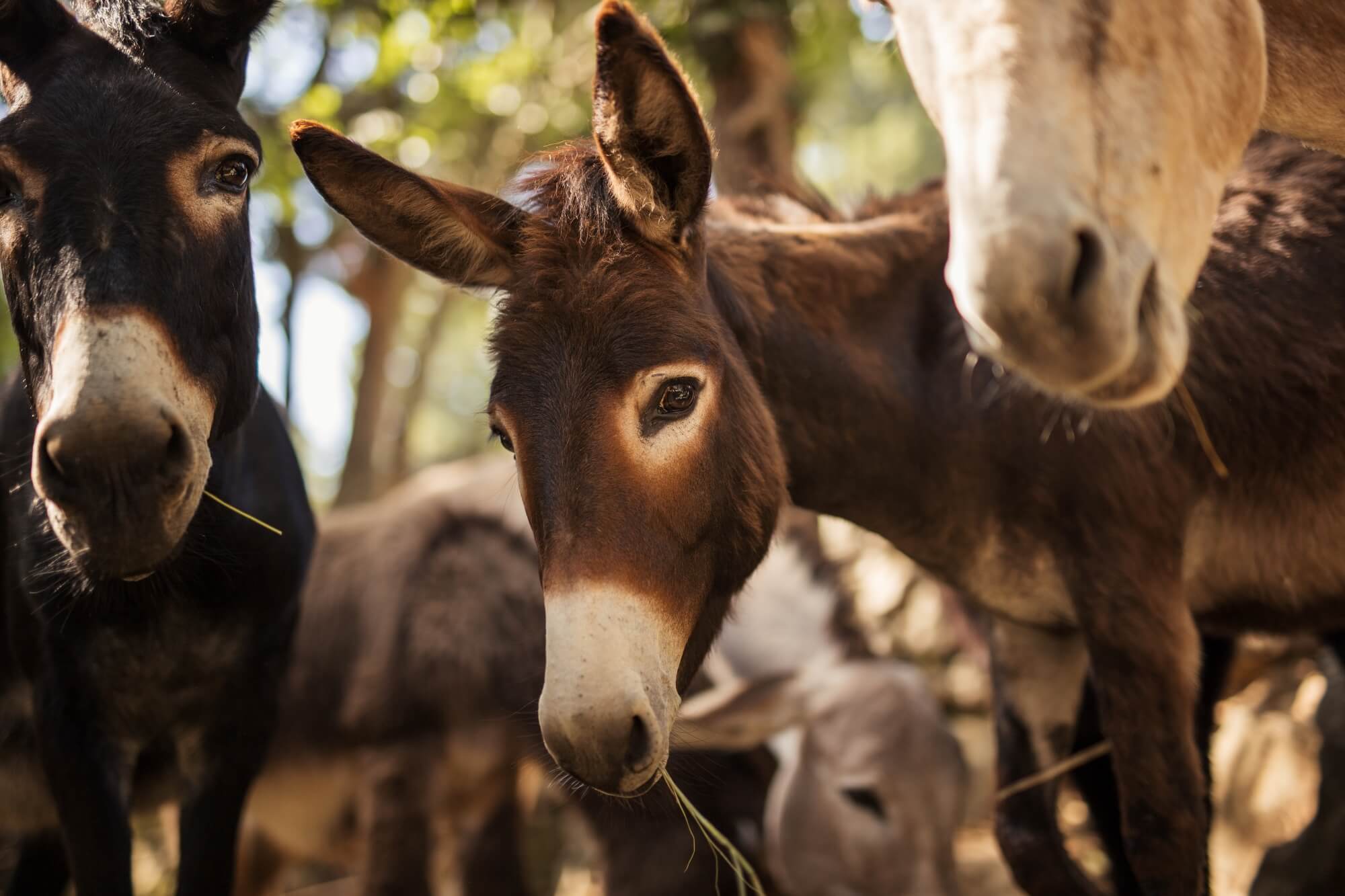 Donkey farm at Agroturizam Antunović on Pelješac
Donkey farm at Agroturizam Antunović on Pelješac
For the legislative framework, we have initiated the formation of a working group for the development of Seoski Tourism, which is now operating in the Croatian Ministry of Tourism and Sports. So, at the workshops, we ask if anyone is having issues. We collect the responses and address them in the working group.
Part of the workshop is the presentation of a new web application of Seoski Tourism, which we have developed with Croatian Ministry of Tourism and Sports. It has two purposes. One is to create a digital catalogue of Croatian Seoski Tourism. You can see region by region some of the Seoski Tourism options – currently around 40, those who have already enrolled.
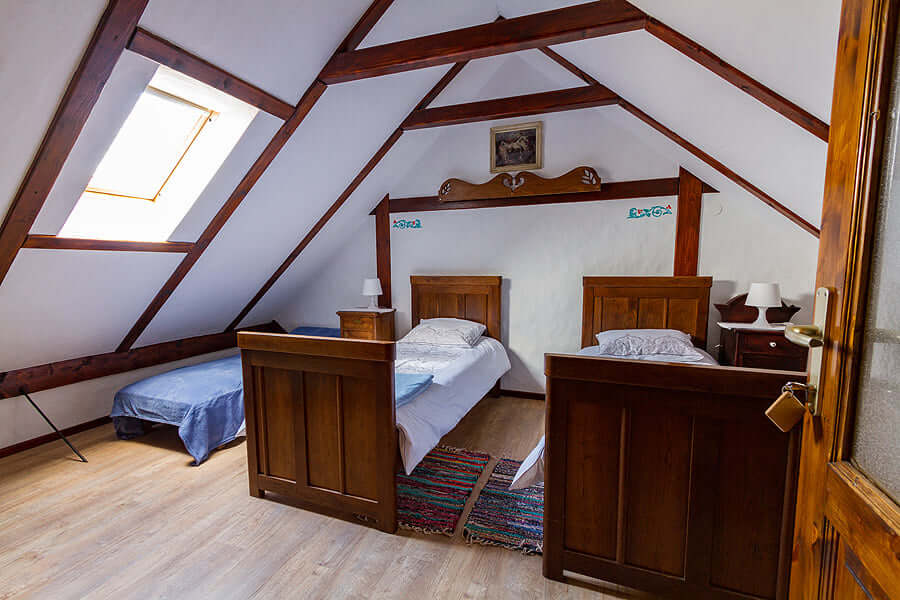 Podravina Etno rooms at Zlatni klas Otrovanec
Podravina Etno rooms at Zlatni klas Otrovanec
A version of the app is currently available on the website of the National Tourist Board. But, they are building a new website. The forthcoming version of the catalogue will likely be more user-friendly with many more functions and options. On the new website, Croatia's Seoski Tourism options will be detailed in many different languages. It should be a great resource not only for tourists but for travel agencies, journalists like you and for educational institutions. That's the reason we are devoting time in our workshops to encourage Seoski Tourism providers to enroll. We are just at the beginning of the process.
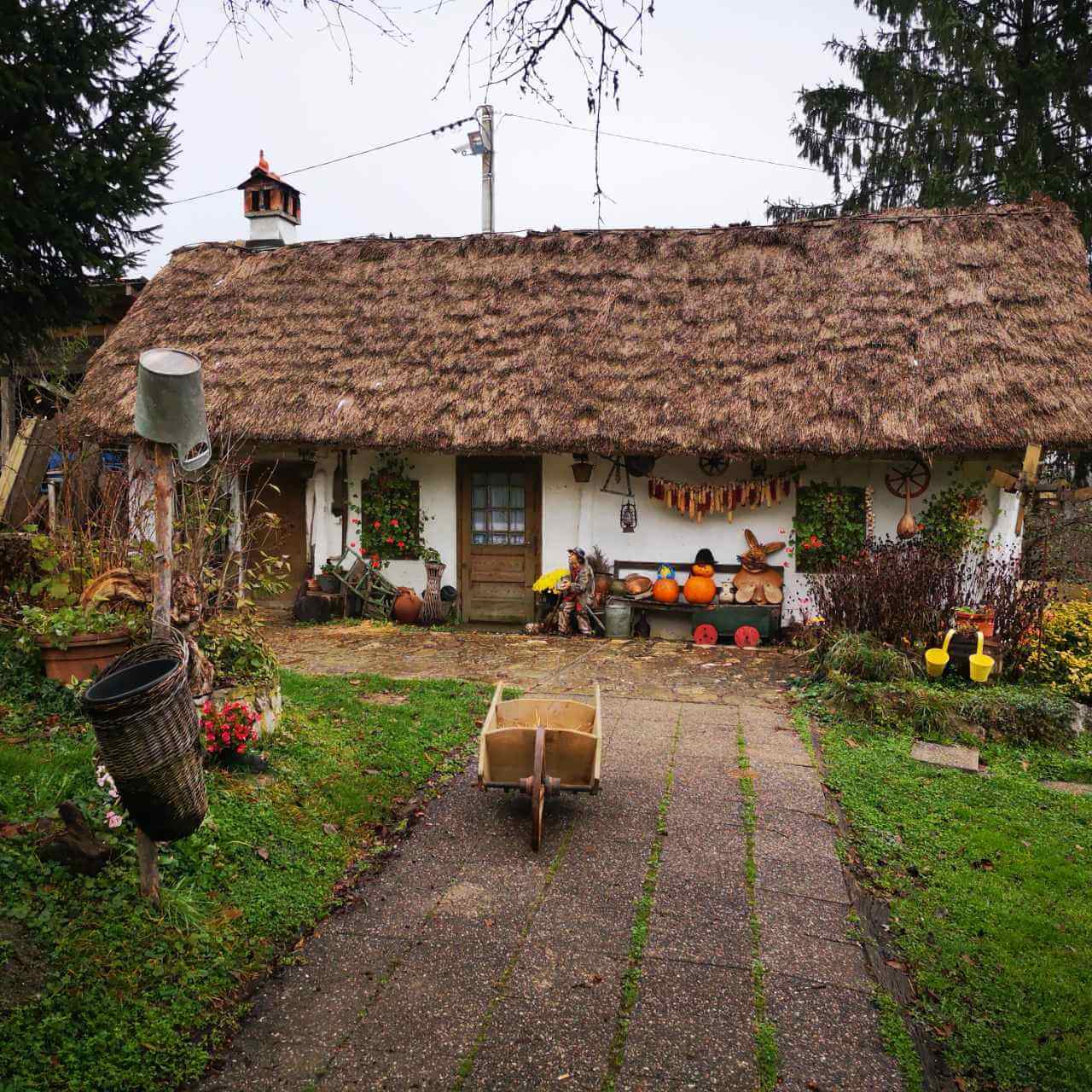 Grešna pilnica in Zagorje © Jasna Podboj
Grešna pilnica in Zagorje © Jasna Podboj
The second purpose of the app is to collect information about the service providers. This info will be used by our working group when defining a Croatian model of Seoski Tourism. So far, we have taken examples from Slovenia, Italy and other countries that are successful with Seoski Tourism. But, these models were entered into our legislative system without fully considering our distinct business and cultural environments. That is now about to change.
We are very happy that, following many years of partially successful advocacy, there is now political will at a ministerial level to really shape things up, to change the laws and regulations in order to facilitate Seoski Tourism. We want to encourage more Seoski Tourism, not to have people from agriculture being turned away because of the difficulty of the process and bureaucracy.
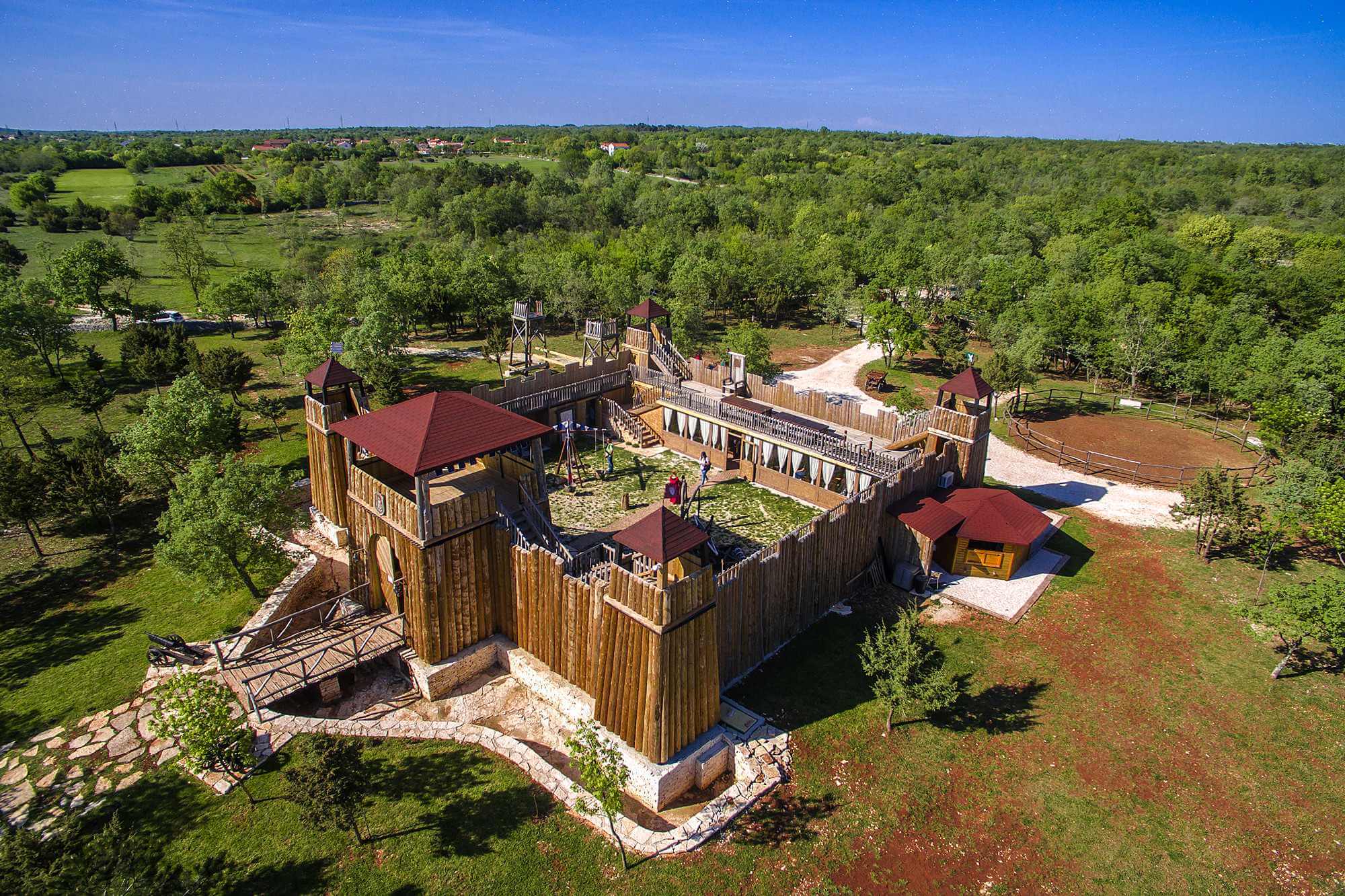 Medieval Theme Park San Michael © Silvia Otočan
Medieval Theme Park San Michael © Silvia Otočan
You said part of the workshops will focus on new trends. What are some of these?
Research has been done by a working group that is developing a new tourism strategy for Croatia. It's called Strategy for Sustainable Tourism to 2030. Under the auspices of this group, a number of research fields have been analysed.
The collected data shows that a huge percentage of tourists are now more inclined to eat locally grown and healthy food. They want to spend their time on estates that are run in accordance with ecological principles. So, they really care about issues like how waste is disposed of etc. They also pay a lot of attention to culture. They are curious to learn exactly how we are living, how we are working and how we produce things. They want to learn about our society and culture. And, importantly, they really care about how they spend their money. Above all, they want to spend money in areas that can help support local communities.
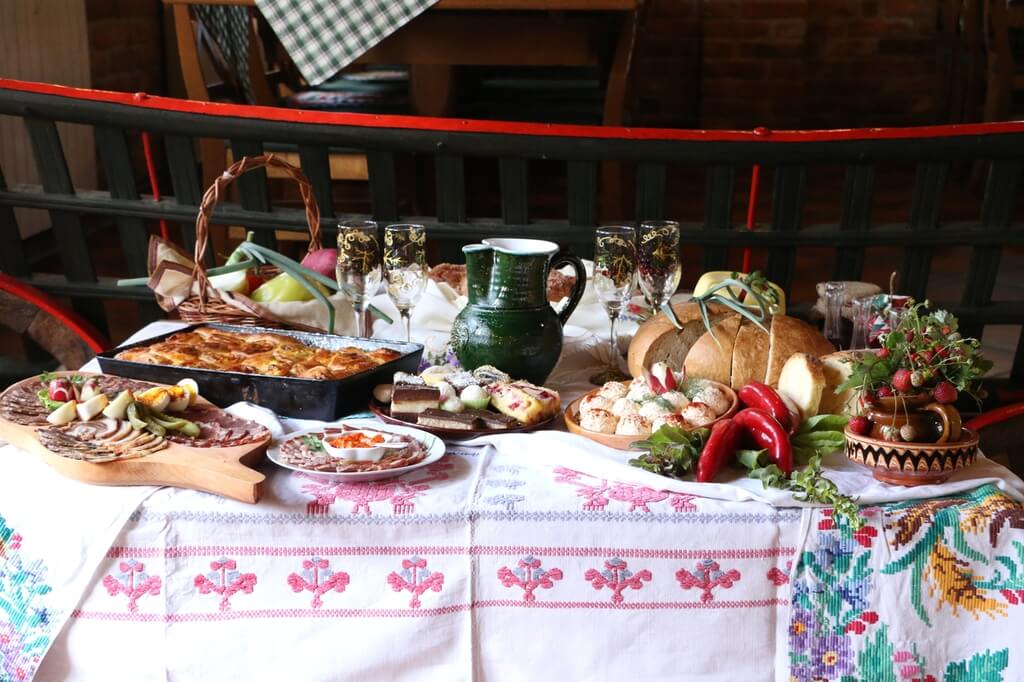 Prigorje Breakfast at Rakić Family Farm
Prigorje Breakfast at Rakić Family Farm
For us, this is really important. Because Seoski Tourism answers these demands to an incredibly high level. We do produce local, healthy food. Not only on the agricultural estates where you can experience Seoski Tourism, but also from their neighbours who just do agriculture. We are concerned with ecology, we protect cultural heritage and the money spent in Seoski Tourism stays in local communities, where it has very beneficial effects.
In the digital promotion part of the workshops we are trying to persuade people about the importance of their online presence. Basically, these days, if you're not online, it's almost like you don't exist. So, we try to explain the importance of having good-quality photos, short videos and a regular online presence.
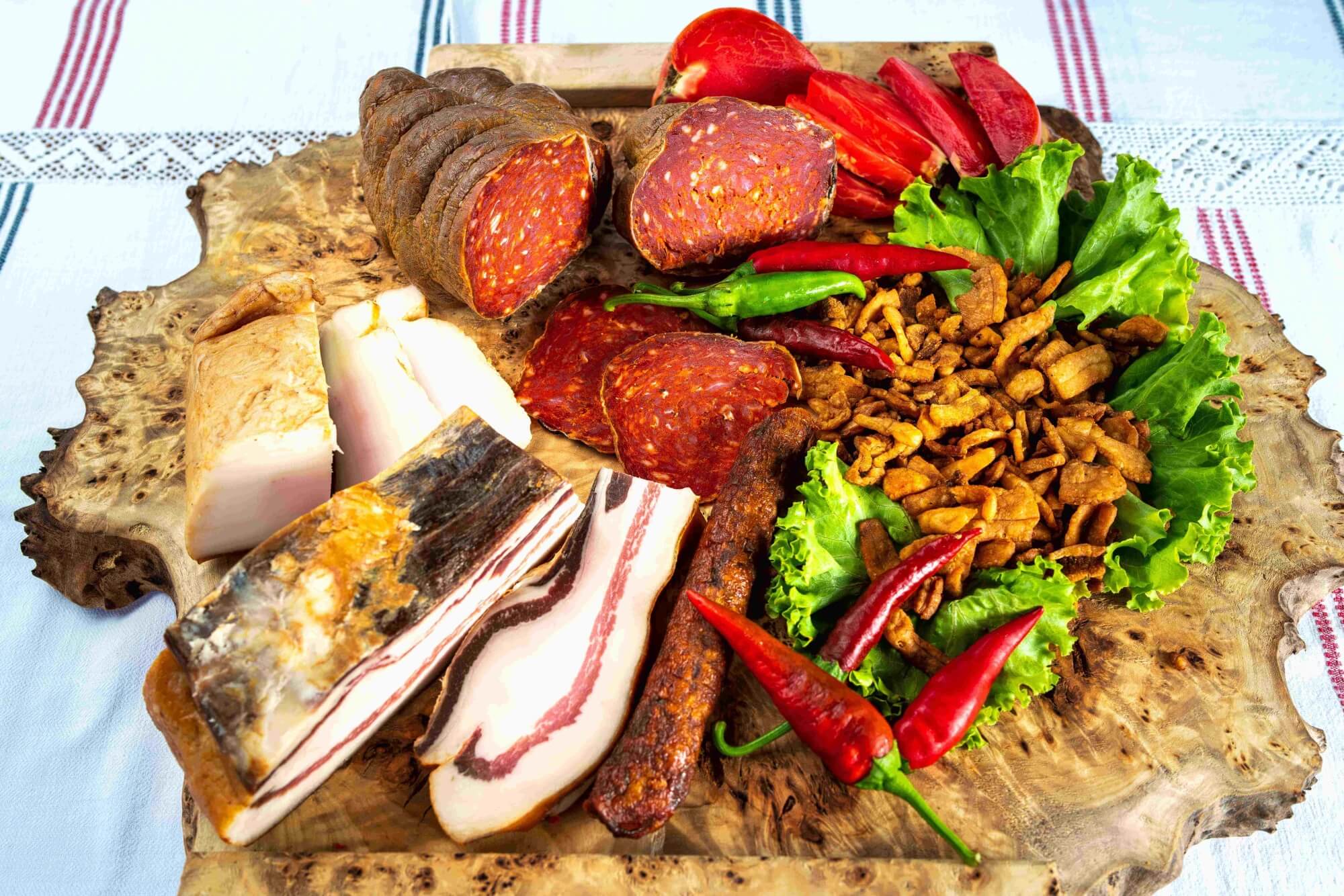 Kulen, čvarci and other specialties at Baranjska kuća © Denis Despot
Kulen, čvarci and other specialties at Baranjska kuća © Denis Despot
That's interesting. In some cases, it might be like two different worlds colliding - people who work in a traditional industry and a traditional environment having to adapt to a very modern way of operating. There's also another potential collision when providers learn of the expectations within modern tourism. Because these people can no longer just work in agriculture. To operate in Seoski Tourism, you're also very much expected to also be a host.
Yes. All of our current service providers who are successful within Seoski Tourism are also great hosts. It's essential. You can see it in almost all of the reviews for this kind of tourism. Guests come for the food and drinks and surroundings, yes. But, what they value the most, what they remember the most, is the host part of the experience. On the estates of Croatian Seoski Tourism, guests are welcomed like family. Across all of Croatian tourism we are expected to be good hosts. It's part of our reputation and the reason why many people come here from all over the world. In Seoski Tourism, it is vital we live up to those expectations.
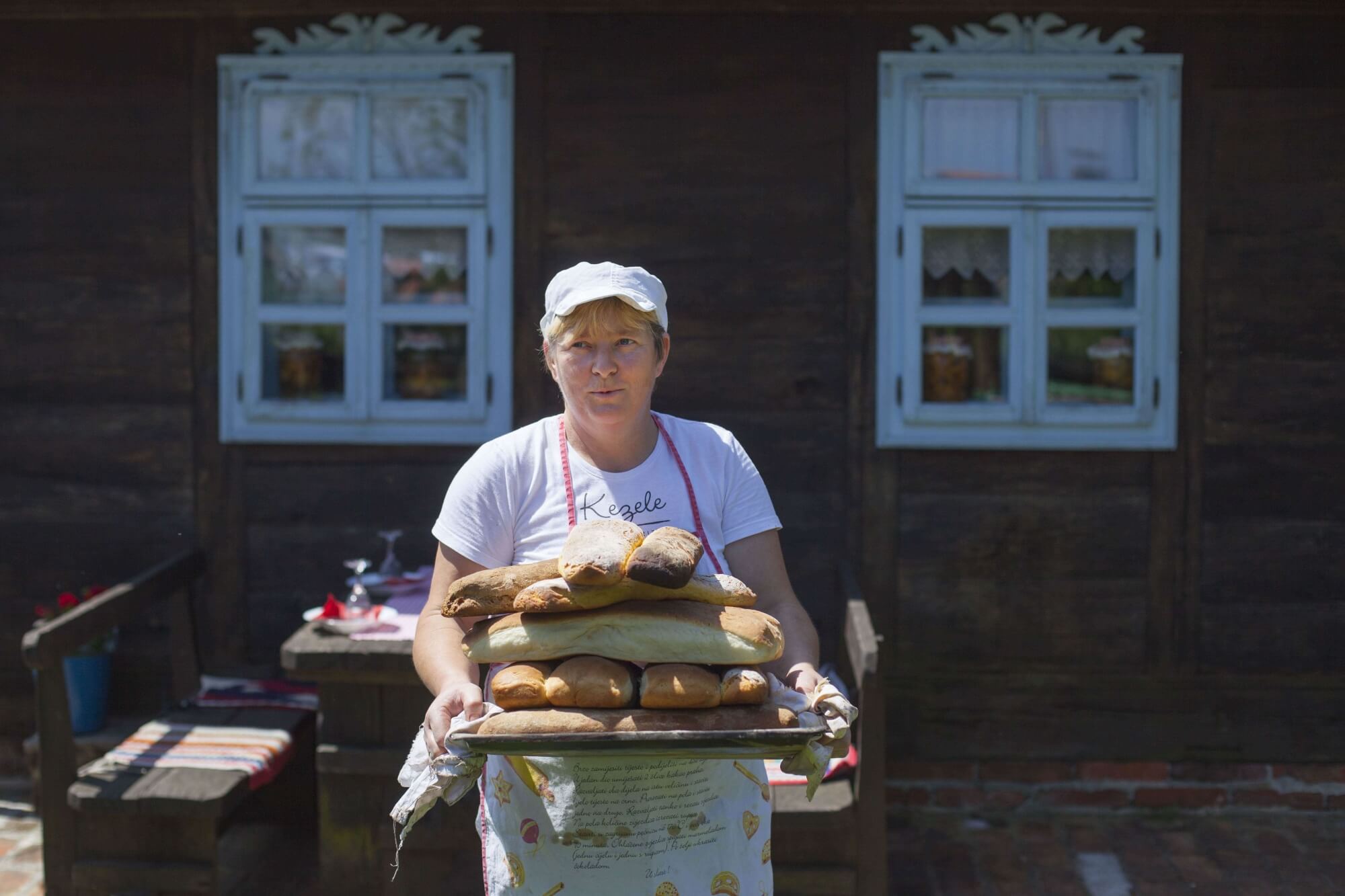 Kezele family farm © Davor Konjikušić
Kezele family farm © Davor Konjikušić
Another aspect of this, which is a more recently-observed element, is that visitors often want an insight into the actual lives, even the personalities of their hosts. They want not only to taste the homemade sausages you make, but they also want to know how you do it, where you do it, how you learned to do that. When they go to Spain, they want to know how the people there make their wine. And, when they come to Croatia, they want to learn how we do it here.
So, all in all, those of us in Seoski Tourism are really busy. We are in agriculture, yes, but we are also in tourism and we are also online. With this more recently-observed aspect, we will need to try and devote even more time to our hosting. It can be difficult to balance the demands on your time. But, in our workshops, we are trying to persuade people to talk more about themselves, their lives, their cultural heritage. And, if there isn't time to do everything themselves, then to involve different and often younger generations of the family. Sometimes within the hosting or alternatively just with the online promotion and presence.
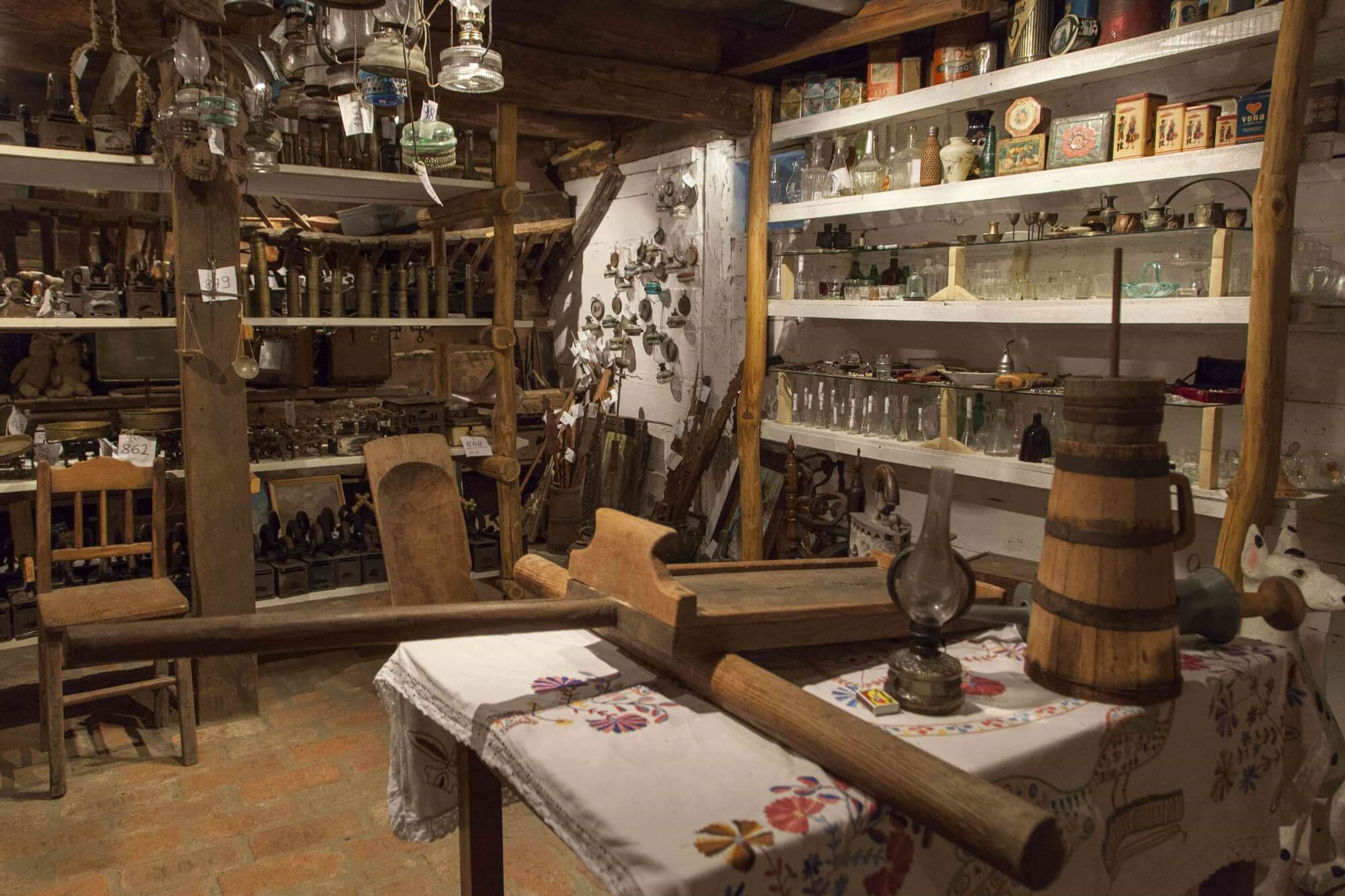 Kezele family farm ethno collection © Davor Konjikušić
Kezele family farm ethno collection © Davor Konjikušić
I've visited some family farms that were right at the start of their journey with Seoski Tourism and they seemed surprised that I was at all interested in what they do and how they do it. I think maybe they thought I was a bit crazy.
Yes, that is a response we sometimes also see at first. I think it's because our generation takes a lot of things for granted. We sometimes think that what we do is just what we do. We are not so good at showcasing it. “Why would I show someone how I make my cheese? I make my cheese like my grandmother used to make it” But, for those who open their doors to Seoski Tourism, inquiries about how they do what they do are only increasing. So, they seem to appreciate how we advise them in the workshops.
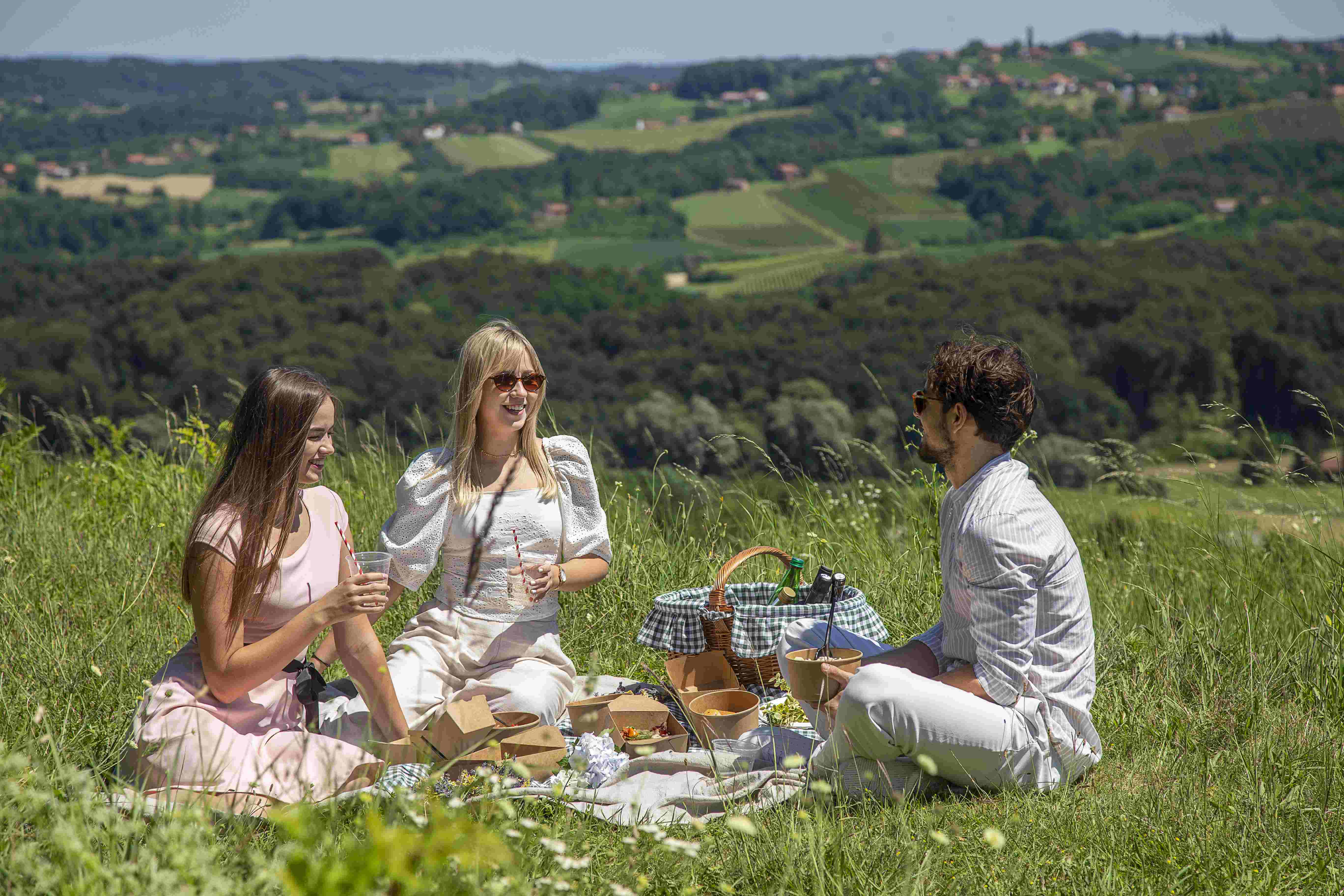 Picnic by Restaurant Međimurski dvori © Igor Nobilo
Picnic by Restaurant Međimurski dvori © Igor Nobilo
We are trying to let our producers know that Seoski Tourism is not just a platform to sell their produce and an overnight stay, but it's a full experience they can sell. There are agricultural farms in Austria that are established in tourism that you must pay only to visit. Of course, that doesn't happen currently anywhere in Croatia, even though some of our Seoski Tourism estates have sections that look like museums.
Some of these aspects are very new. And the feedback is great. I truly believe there are hidden treasures to be discovered in some Croatian villages. We are here to tell that story.
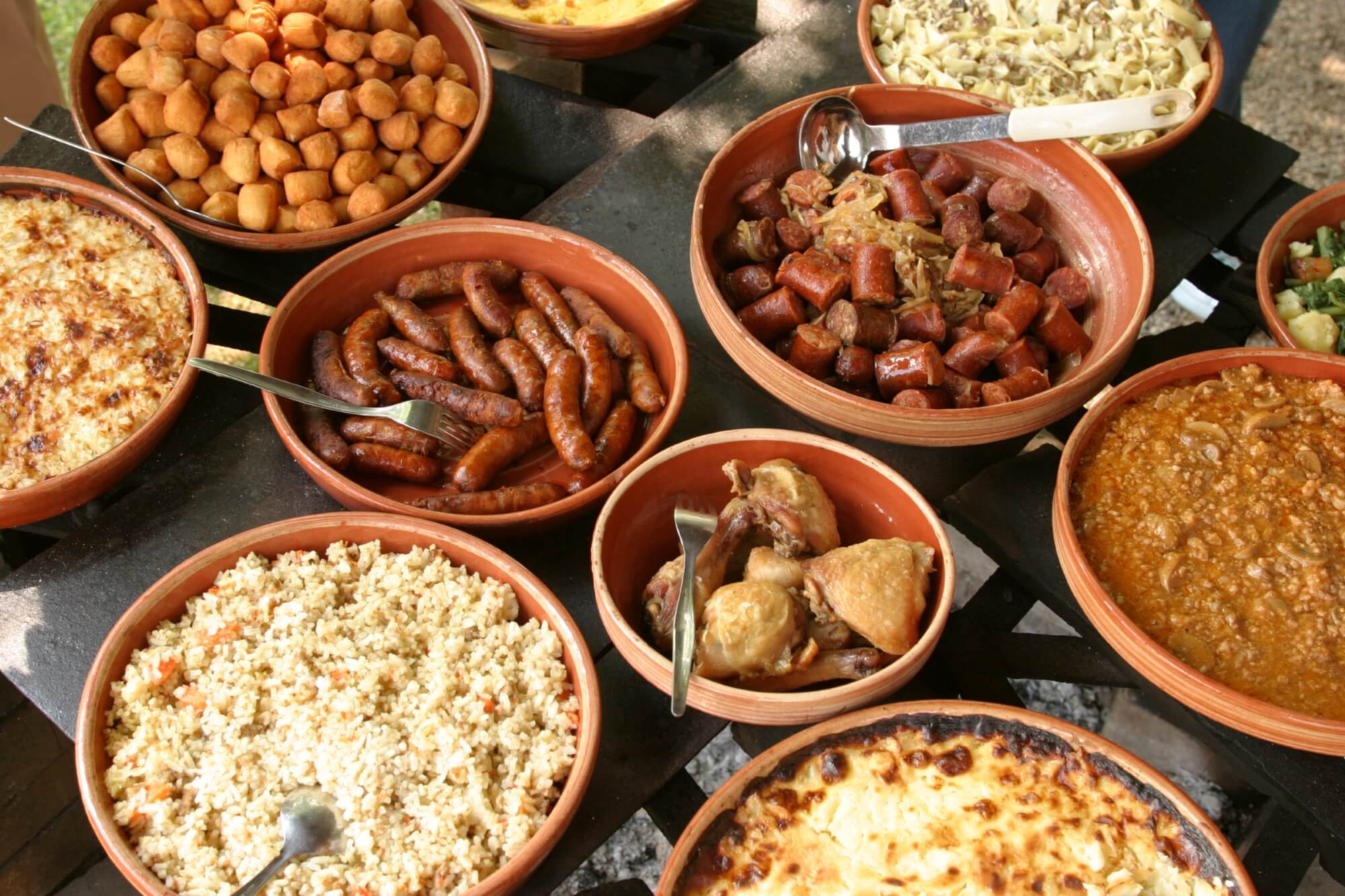 Selection of food from a Slavonian village © Mario Romulić
Selection of food from a Slavonian village © Mario Romulić
What is so rewarding about Croatian Seoski Tourism that international visitors would want to go to a traditional farm in some inland village instead of lying on the beach in Dalmatia for 14 days?
People come because they really want to see a different side of Croatia. And, there are many different aspects of Croatia to discover – not just Seoski Tourism, but also National Parks and Nature Parks. All of our current trends show us that more and more tourists are willing to come inland from the coast or to explore a different part of Croatia – inland Istria, for example, or continental Croatia.
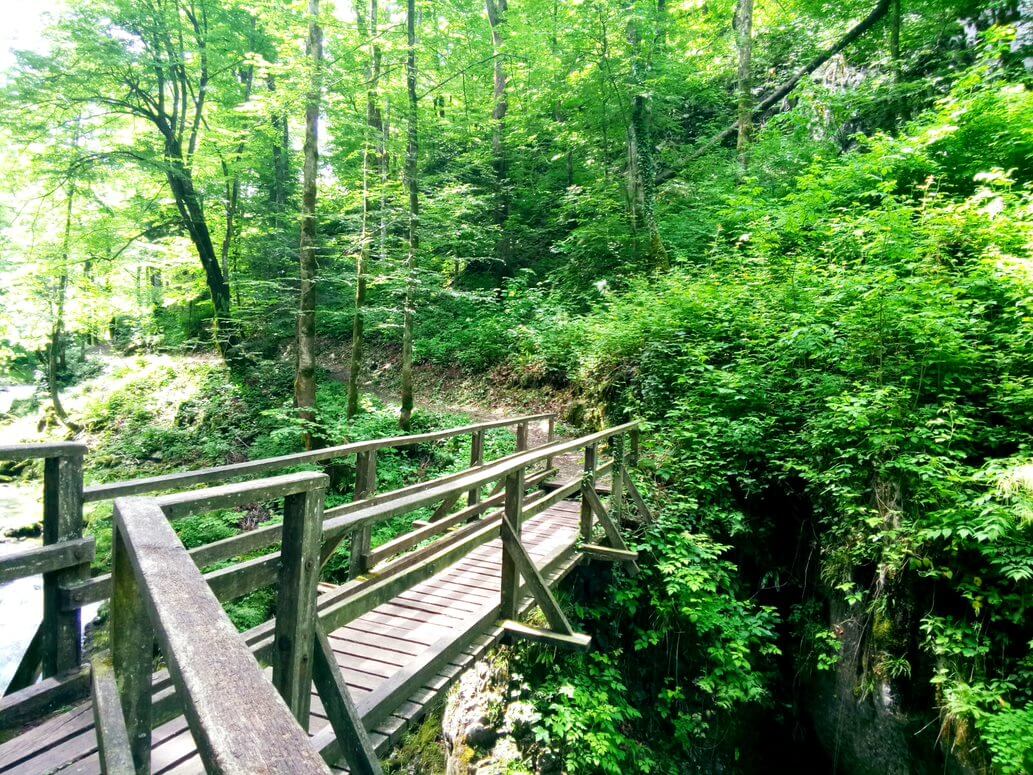 Kamačnik river canyon © Aleksandra Kuratko Pani
Kamačnik river canyon © Aleksandra Kuratko Pani
They really want to try authentic, local food. They want to eat healthy, to know what they are eating and how it is made. And, they want to experience flavours that are different from the usual ones they get from the supermarket.
 Traditional Međimurje table at Etno restaurant Međimurski dvori
Traditional Međimurje table at Etno restaurant Međimurski dvori
Also, I would say that with Seoski Tourism, people get to know better an authentic version of Croatia and its culture. It's a story we hear very often from our members. Some of them are visited by large groups from cruisers. These are people who might be on a cruise on the Adriatic and who journey inland for a day trip. Or, it might be a group who are cruising the Danube and disembark to visit a family farm in Slavonia, Baranja or Srijem.
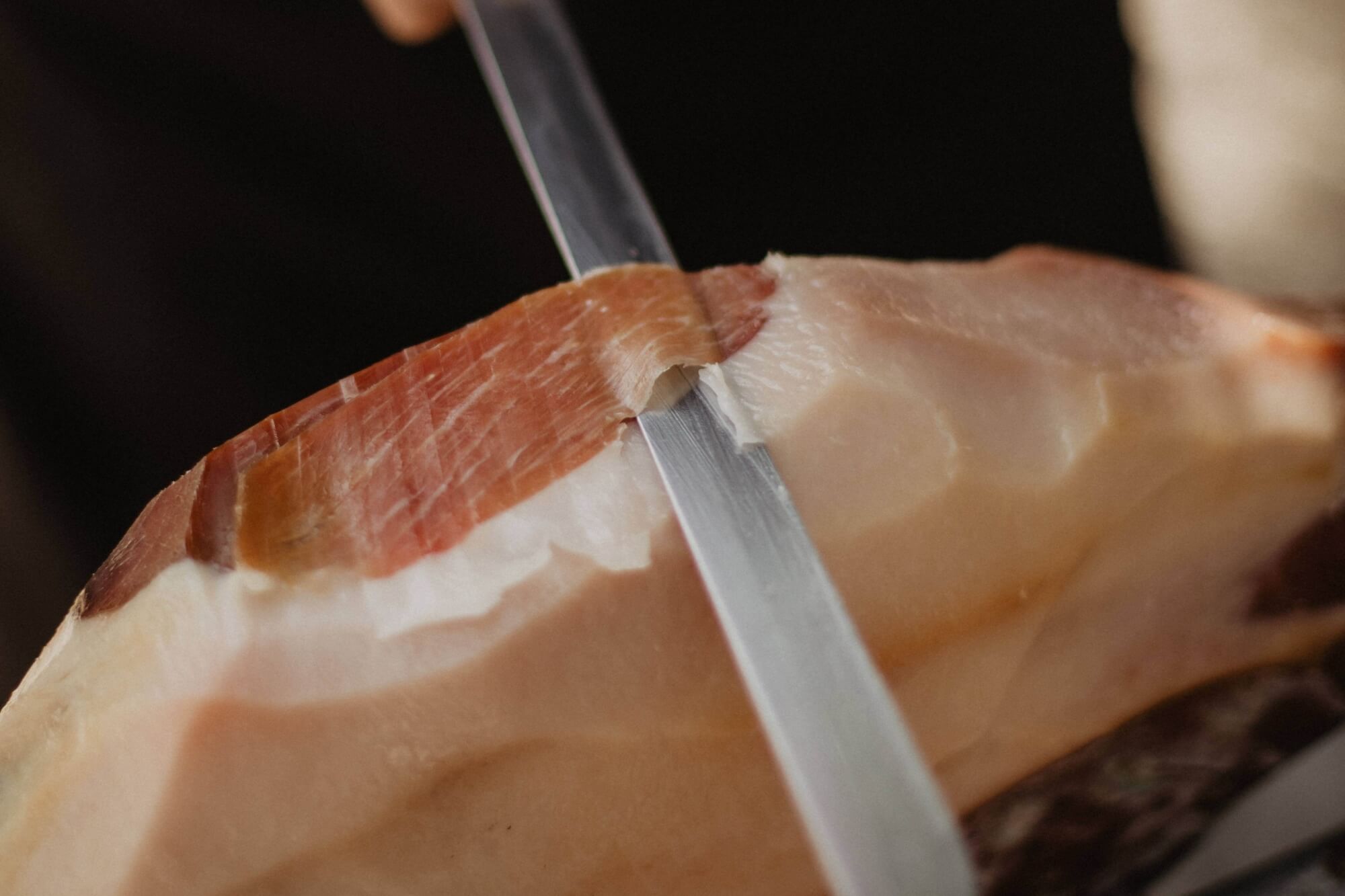 Prosciutto from Drniš at Agrotourism Kalpić © Ivana Kalpić
Prosciutto from Drniš at Agrotourism Kalpić © Ivana Kalpić
When they visit farming estates on day trips, it's very often a huge 'wow' moment for them. For many, in their minds, Croatia is simply sun and sea. And that's not entirely their fault. We, as a country, have done very little until now to promote alternative sides of Croatia. The visitors experience these wow moments because of the hospitality they receive and because of the tangible aspect of the visit. This is a modern aspect – people want to touch things, know how things feel, taste, smell. They want to ride on horses or feed them. Or take part in cultural activities. These parts of a visit to Seoski Tourism are very difficult to experience anywhere else.
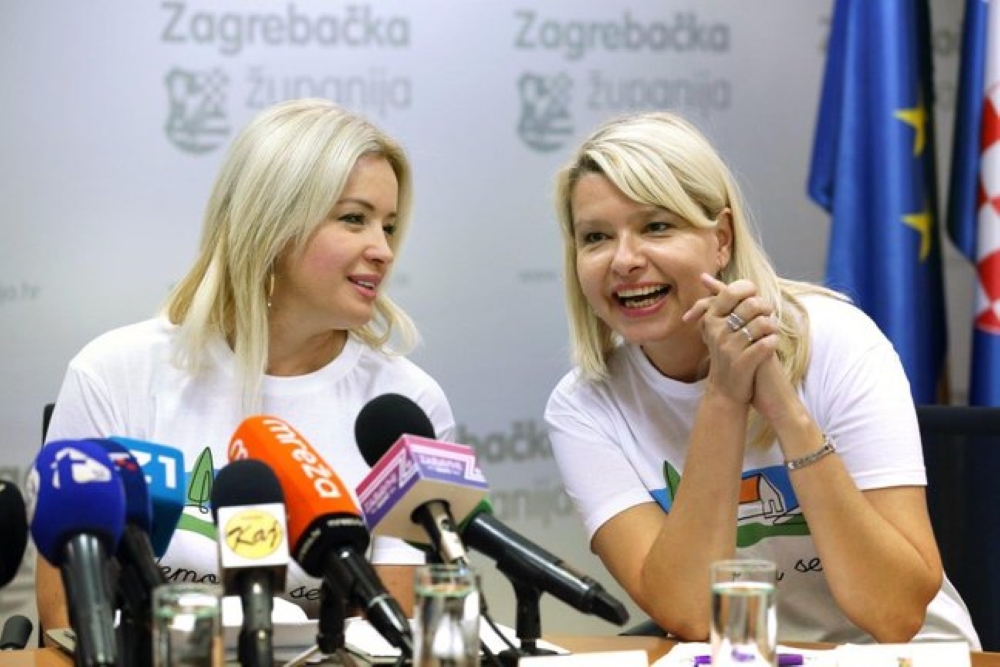 (left) Ivana Alilović, director of Zagreb County Tourist Board (right) Aleksandra Kuratko, secretary of Udruga ruralnog turizma Hrvatske (Croatian Rural Tourism Association) © Zagreb County
(left) Ivana Alilović, director of Zagreb County Tourist Board (right) Aleksandra Kuratko, secretary of Udruga ruralnog turizma Hrvatske (Croatian Rural Tourism Association) © Zagreb County
Udruga ruralnog turizma Hrvatske's online Seoski Tourism workshops begin today and their physical workshops continue next week in Istria.
If you'd like to read more about rural tourism in Croatia, then look here
Brač Trips: 3 True Stories About Hospitality, Safety, and Entertainment on the Island
15 June 2021 - One TCN intern visited Brač three times and learned first-hand about hospitality, safety, and entertainment on the island. Even though these stories are unlikely reproducible, it shows a special atmosphere of the island where you can be a most unprepared and careless tourist and leave your fun up to islanders. A look at three Brač trips!
1. Supetar and Sumartin: before the tourist season
A story to tell about Brac is olives, olives, olives... Along the 40 km from Supetar, the ferry port, and administrative center, to the most eastern town of Sumartin. From time to time, olive trees are changed by other species, but mostly a road view looks really monochrome. The good news is that olive is an evergreen plant, therefore you can come on Brac out of the tourist season.
The bad news is monoculture. That is probably due to historical tradition. People say that during the Venetian rule on Brac no young man was allowed to marry until he had planted a hundred olive trees. Maybe, it also relates to a lack of knowledge about other plants. Some few people in Split can recognize Phillyrea (mock privet) trees, although it is also from the Oleaceae family, a close relative of the olive. A few know how an olive flower looks like while everyone cares only about olive oil. An olive flower is small and appears early. You can see it if you come to Brac from the end of April till the beginning of June.
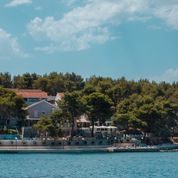
A possible reason for the prevalence of olives there is also unpretentiousness. Why plant grapes to constantly tinker with them when you can plant olive trees and don't bother either yourself or your descendants within the next 400 years? In sum, islanders have more time to care about their guests when they care less about the garden! They do care as I've learned from my own experience coming well before the start of the season. There were barely any tourists and no young people on the streets.
There are kindergartens and schools on Brac, but to continue studying, you have to go to the mainland. Unless you've decided to become a stonemason. There is a known school of stonemasons in Pucisca. Besides olives, Brac stone is another export brand of the island. Diocletian's Palace in Split, the most beautiful churches in Croatia, the parliament buildings of Austria and Hungary, and the White House in Washington DC are made of this stone. Returning down to earth it seemed to me that sculpture is quite a popular hobby among the locals, therefore you easily notice interesting sculpting along the roads in villages like Selca and Povlja.

There are no faculties or universities on Brac. Students who left to study on the mainland unlikely to come during the winter season as well young tourists seeking a beach party paradise on Brac Bol in summer. Thus, I was going to spend my weekend walking and sightseeing alone. I took a bus from Supetar to Sumartin and went other distances between the villages by foot, 24 km in a day. However, I was most impressed by the social kind of entertainment - a village party in Sumartin on Saturday evening. I had done 24 km and wanted to drop dead on my bed for a few hours, but the hostel owner's daughter (of my age) who met me had another plan.
We have a party up the street. You can come with me. I invite you! - No, thank you. I've walked 24 km. I'm bloody tired, I want to have a rest. Sure, I understand. You need to have a rest...But actually, you know, we are young, we don't need much rest, so, you can go to a party with me! - OK! [I didn't have the energy to argue]
The party was devoted to the end of construction of the ground floor of a house that one young guy from the village built. Village friends had slaughtered and roasted a lamb, they brought homemade wine and olive oil. I felt in the first few minutes my visit was not in vain.
Organised 'village tours' are not popular among youth, it usually lacks true authenticity that you can meet as an independent tourist. It was the very case for me. I met fishermen, builders who speak only Croatian, students from Split (they speak English). Naturally, they played Balkan turbo-folk music. They were not good at dancing, so when guys didn't know what to do during a 'groovy' song, they grabbed heavy objects (a poker, a barrel, etc.) and began to lift them. Meanwhile, girls did sit-ups crazy fast!
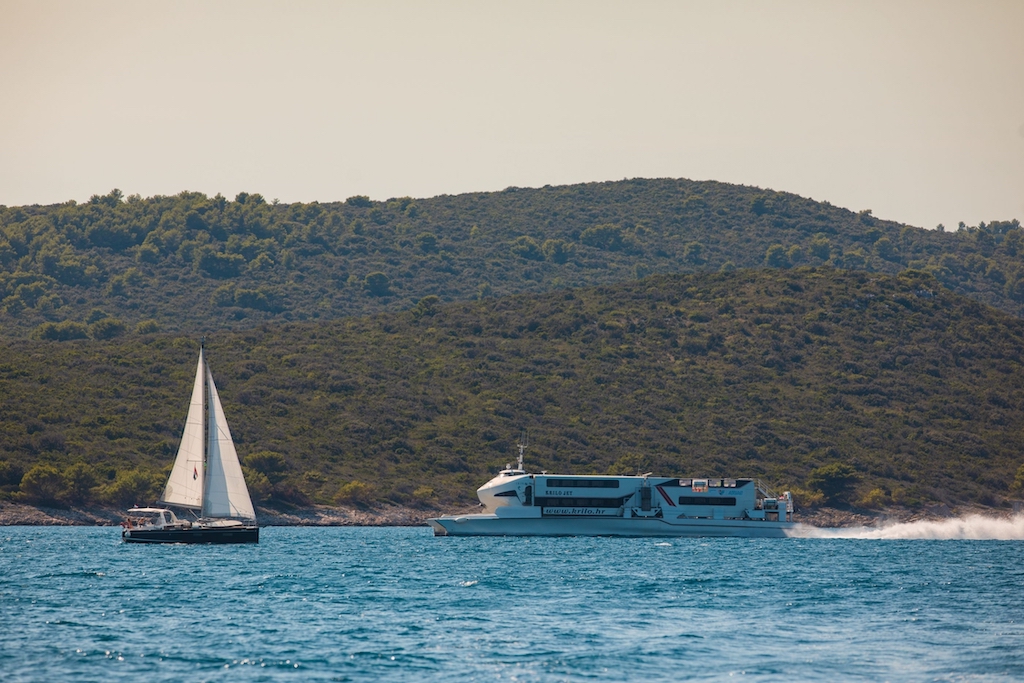
I was going to give a dance workshop and climbed up on the table, but two girls jumped in there after me and started a conversation. They literally attacked me with questions, therefore we stood on the table for an hour just chatting. Perhaps, we would never have such a chance at a nightclub party! A chance to meet at the village party a fan of the Russian tv-series 'Kitchen' ('Kuhinja') was even less, but Eni from Brac was flattering a lot to my Russian background.
The most epic moment happened to me when a son of the owners of the house where we had a party - the biggest house in Sumartin, only the church is higher, - was showing me everything he owned: a house, a gazebo, a grill terrace, a bar, a garden, swimming pools, garages, etc. Let's say, a sightseeing tour accompanied by nice complaints. "When I go somewhere with friends, I pay for everybody... When I show my parents anything I like, they buy it immediately for me... It's so hard to be independent if your parents are rich..." Top complaints, huh? I really had top entertainment that night! Finally, it happens amid a contrast: while some people on Brac apply for EU funds for rural areas development, others suffer from a family abundance. It's a pity and simultaneously a good topic for reflection when you travel before the tourist season.
2. Sutivan and Milna: waiting for a miracle
My second trip to the island of Brac occurred in April. At this time islanders start slowly preparing for the season. A lot of places are still closed, but the atmosphere becomes more welcoming and bracing. Largely, I would say it's a good direction on Brac regardless of the season.
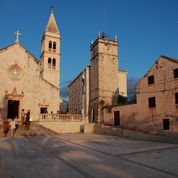
A little derogation about the 'Su' towns. Su is Latin 'Sv', two letters have a similarity in writing and pronouncing. Sv is short for 'Sveti' (Saint in Croatian). In this way, Supetar is Sveti Petar, Saint Peter's town, Sutivan is Sveti Ivan, Saint Ivan's town, etc. I've already seen Supetar, ferry port, thus I just did a loop for my friend come from Split for the first time. Riva, St. Peter's church, Jobanova Street where you can easily think that Croatia is the most beautiful country in the world - that is Supetar. At the west exit from the city, we found a firehouse. I'm interested in fire departments on islands because they are voluntary, not municipal. Their volunteer showed us an old fire truck donated by Great Britain. When he learned I'm from Russia, he said that his neighbors here are Russian too. A wife lived for 5 years during the Chechen war in the 1990s. A husband is a healthy Russian man, he can drink a liter and a half of vodka. Great job!
We travelled from Supetar to Sutivan on foot. Further movements around the island were planned by bus. Waiting for the bus to Milna I put things from my bag at the bus stop. "Get up! Let's go! Don't forget your phone!" my friend commanded. I answered "No way! I would rather forget my own hand."
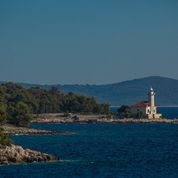
Actually, I paid attention in Milna and noticed a lot of yacht tours on Dalmatian islands do stop on Brac in Milna bay. I liked Milna as soon as the bus began to approach it on the serpentine road.
On the waterfront (literally 'first line' by the sea) there is an abandoned multi-storey house. I don't know what happened there, but the holes in the ceiling/ floor look terrible. A blockage on the stairs between the first and second floor doesn't let to climb up higher. Anyway, I would not recommend entering a house for safety's sake. In a corridor on the first floor, we found a nice retro 'archive'. A poster inviting for the Final concert of the 3-rd Concert-Opera Seminar in Milna on August 21, 1981, hangs in my room in Split.
Waiting for a bus back to Supetar we were chatting with my friend at the bus stop. The topic was an exes' birthday: to congratulate or not. I implore you: Do not discuss such topics at the bus stops! When the bus came, I was lost in thought and... I forgot my smartphone at the bus stop. I realized it in a couple of minutes on the bus. But the bus, apparently, goes faster than it seems. I asked a driver to stop. I'd prefer to ask him to turn back to Milna, but we were on the serpentine road. We went 52 min down the serpentine on foot.
Somehow I was sure my phone was still there at the bus stop. It wasn't there! We asked in a nearby cafe - no one knew. We tried another cafe - it was closed. We asked men working at the marina opposite the bus stop - they were really enthusiastic to help me. They actually proved my hypothesis that everyone knows everyone on the island and it's very safe on the island. Men remembered their friend was walking with the children near the bus stop. Through 2-3 contacts we found his number. Unfortunately, he didn't answer the phone. Almost desperate I wandered back to the bus stop looking around.
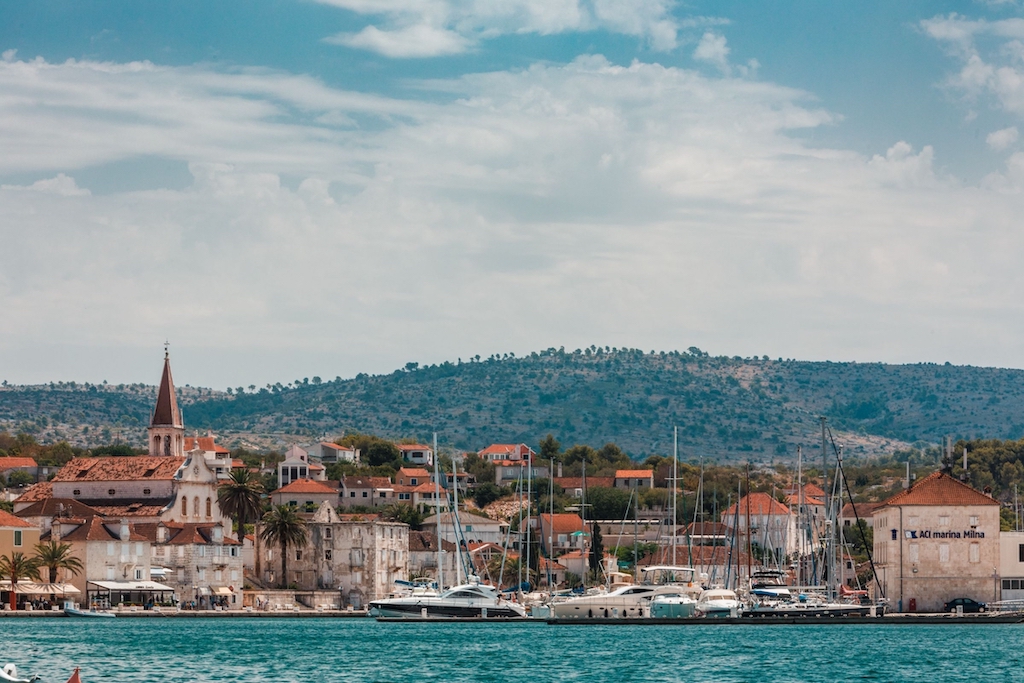
A group of people came towards me. "I have nothing to lose," I thought and came to ask them about the phone. And then a woman coming in the front took my phone out from her purse! It was pure luck, because her company was moving to the parking place behind the bus stop to leave Milna. Then we tried our luck again, because we got off the last bus to Supetar. We've overcome the serpentine road before we succeded to flag cars down. One senior man gave us a ride to a crossroad, Supetar was out of his way. Then two young men drove us straight to the ferry to Split. One wondered whether my friend and I are daughters of those Russians who own a mansion somewhere nearby. "No, wait, it was the mansion of a Hungarian oligarch, not Russian," another guy said. Anyway, we were not, so they switched a topic.
3. Bol: ideal summer beach weekend chill trip
I was deliberately postponing a visit to Bol and Zlatni Rat on Brac to the beginning of summer. Out of the season, you always risk being disappointed there, especially when you've already learned something about the prominent horn-shaped beaches (Zlatni Rat in Croatian means 'Golden Cape', or 'Golden Horn'). Golden Horn needs sun to be gold.
Besides sunny weather needed, a trip to Bol is easily organised leisure that few things could spoil. Ferry boat trips Split-Supetar and bus trips Supetar-Bol matches perfect, thus you don't lose time waiting. Also, it's pleasure to continue with a green promenade from Bol village to Zlatni Rat beach after a mountainy road to Bol. I would, perhaps, aware that there are a lot of people in the season. However, it has some advantages. For instance, my friends and I came on Sunday and saw a wedding on the square in front of the parish church (Zupna crkva Gospe od Karmela) in Bol.
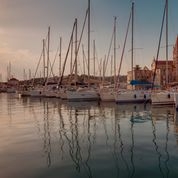
Returning from the beach we noticed that the return trips to Split are also perfectly matched. Therefore, you have all the possibilities: 1) to have dinner in Bol and go back to Supetar/Split by last trips; 2) to take the second to last bus to Supetar, have dinner there and go to Split by last ferry trip; 3) to go back to Supetar/Split by second to last trips and have dinner in Split. We choose first and enjoyed island hospitality in one of the restaurants in Bol. "Why is the place called Jadranka?" a question came to my mind. "My name is Jadranka," an owner answered to me. She was the only child, and (grand) parents called it after her. With her husband, they cook all dishes and keep this place already for decades. One more sign of true hospitality is that they remembered our friends who visited it two months ago.
For more on travel in Croatia, follow TCN's dedicated page.
Power Outage on Monday and Tuesday
I never get this information on time. Could be, because I am not listening to Radio Split, or because of the short notice from HEP (Croatian Electricity Supply) - usually the day before.


